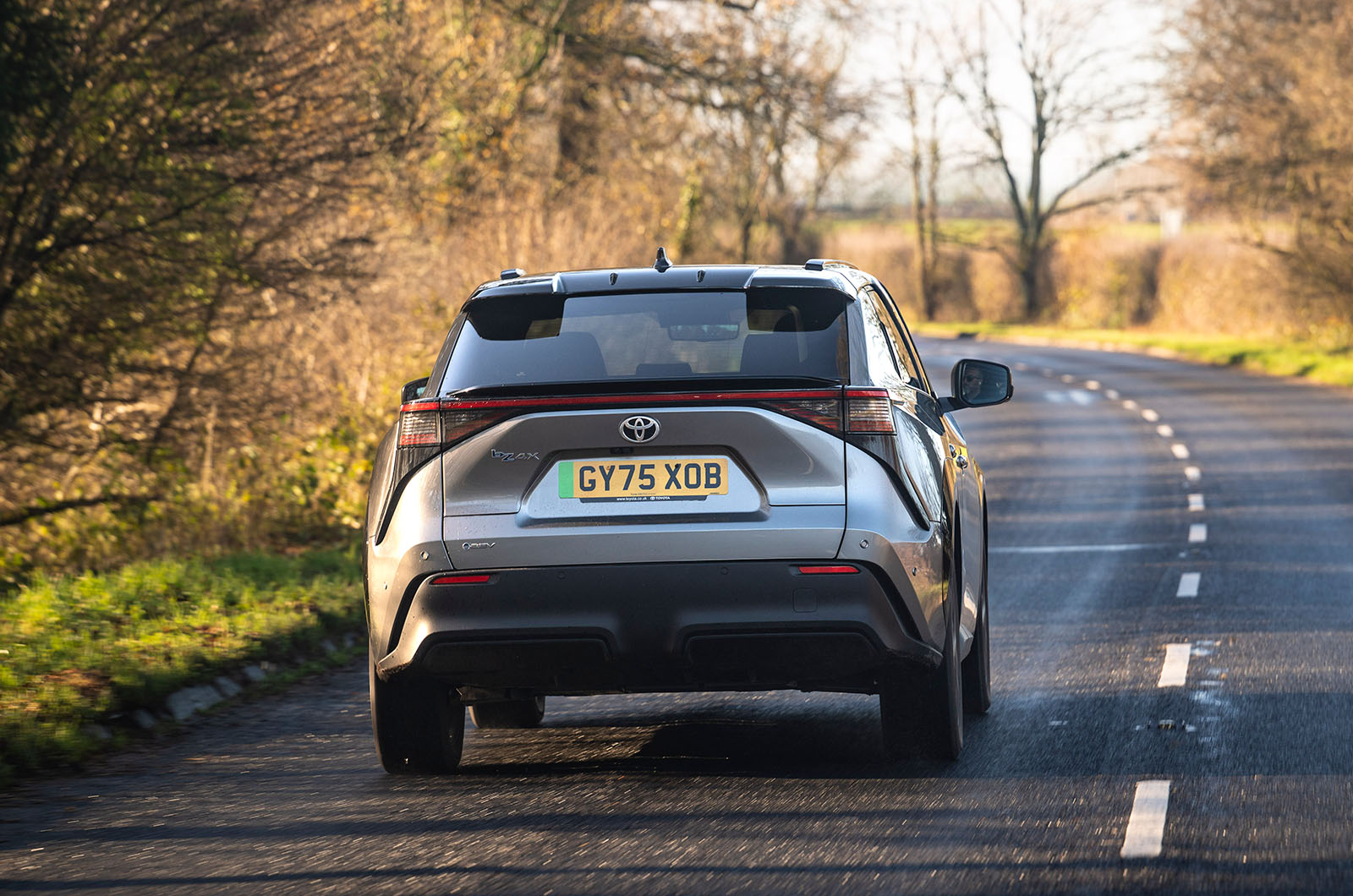
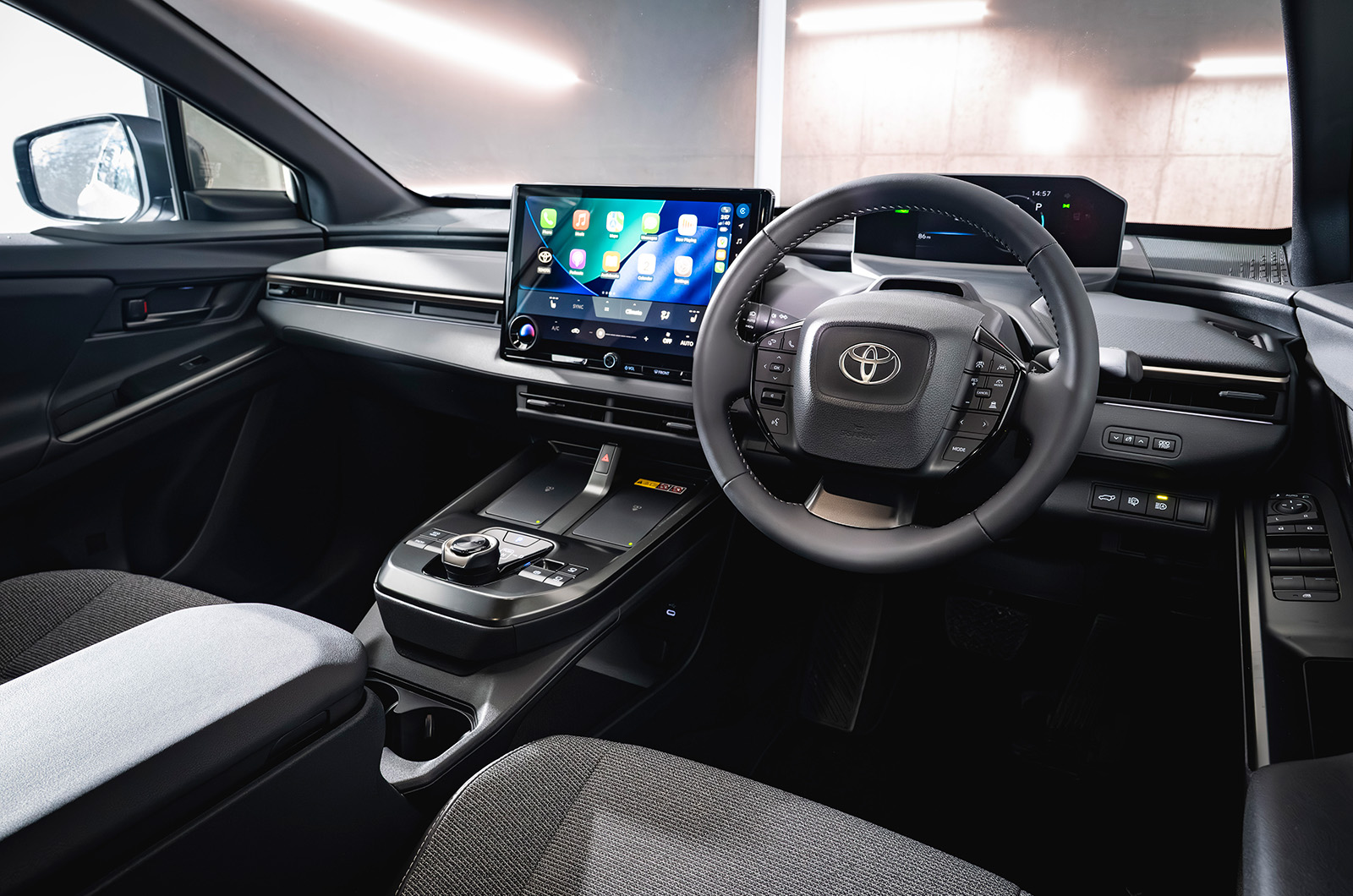
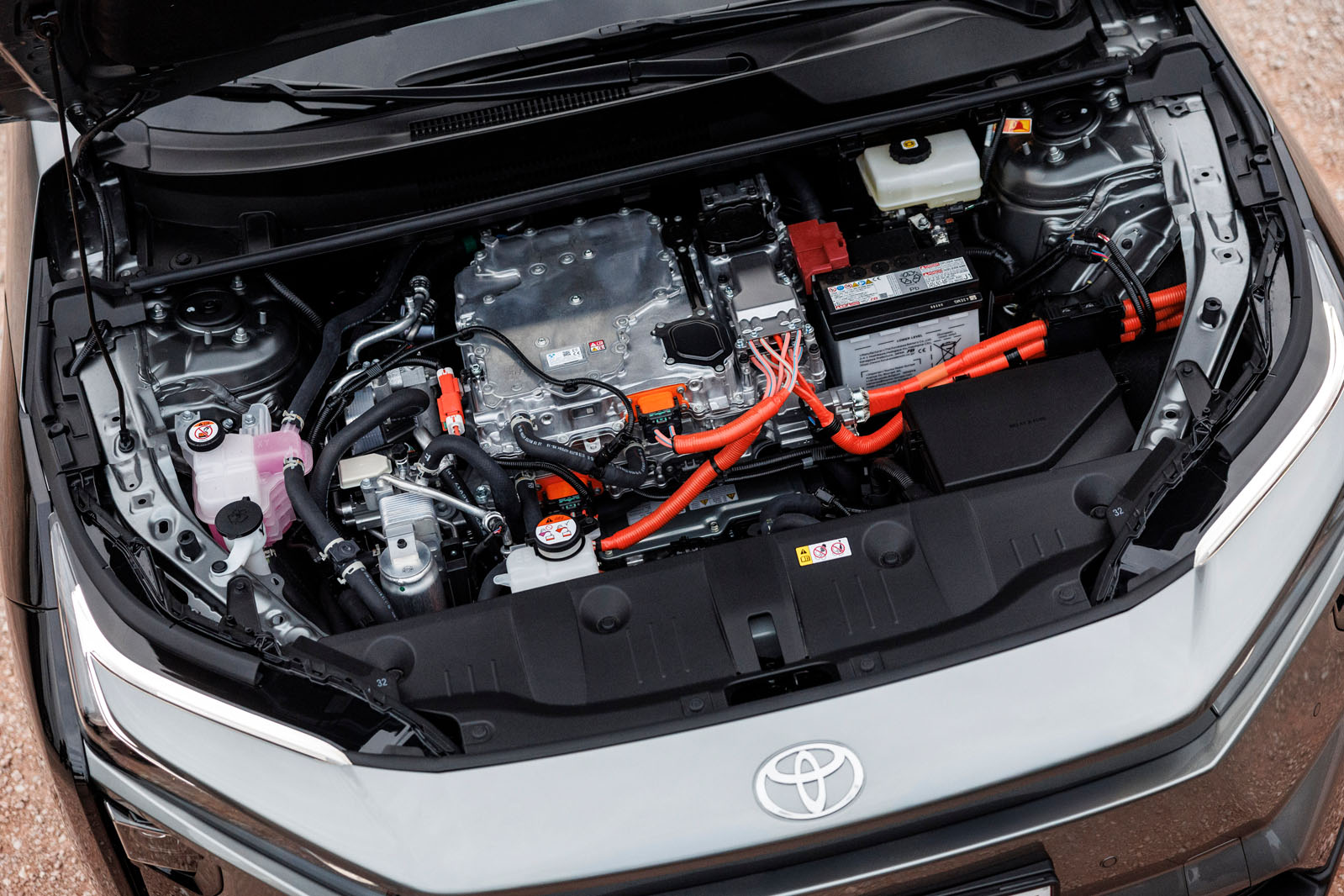
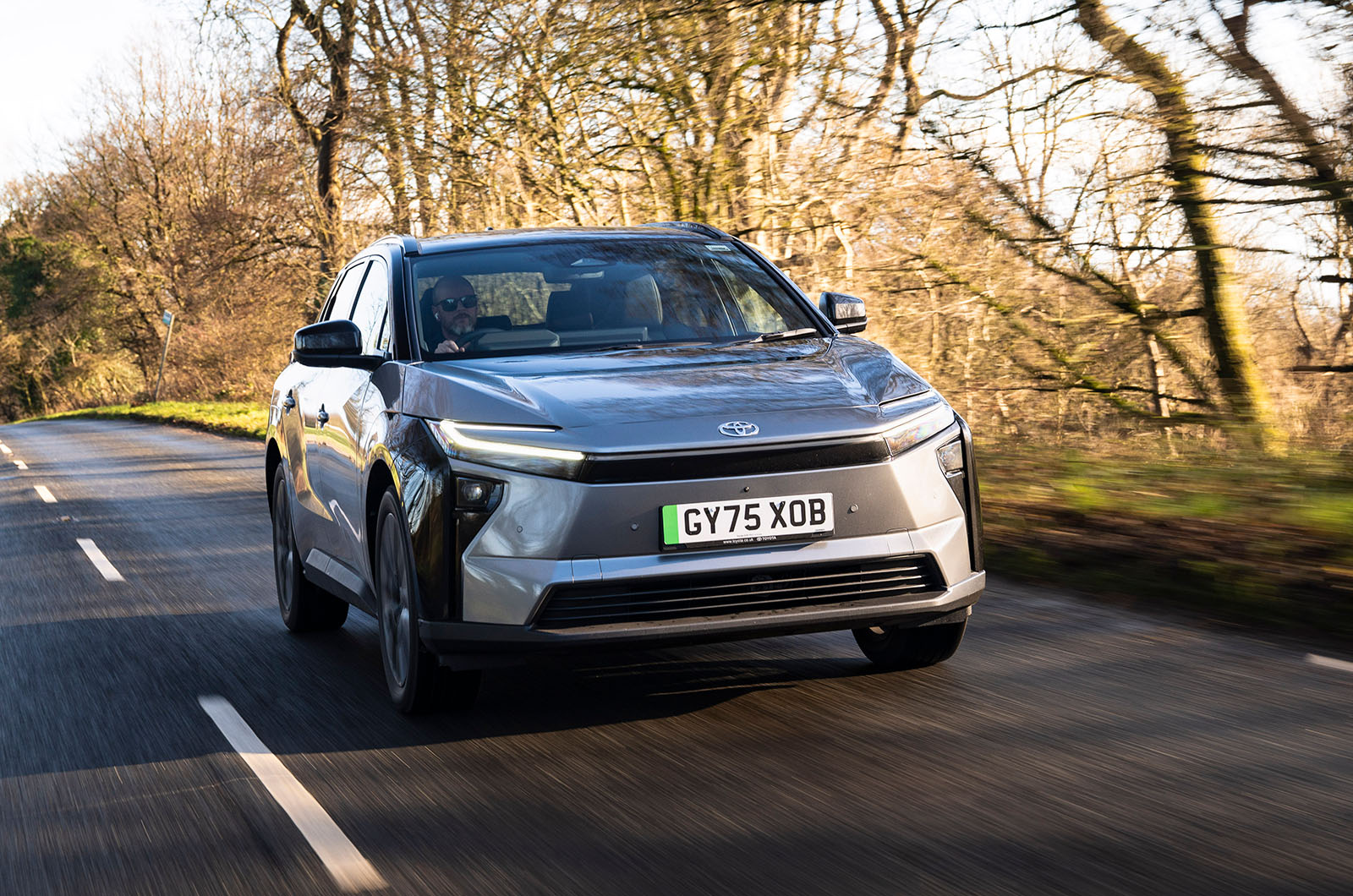
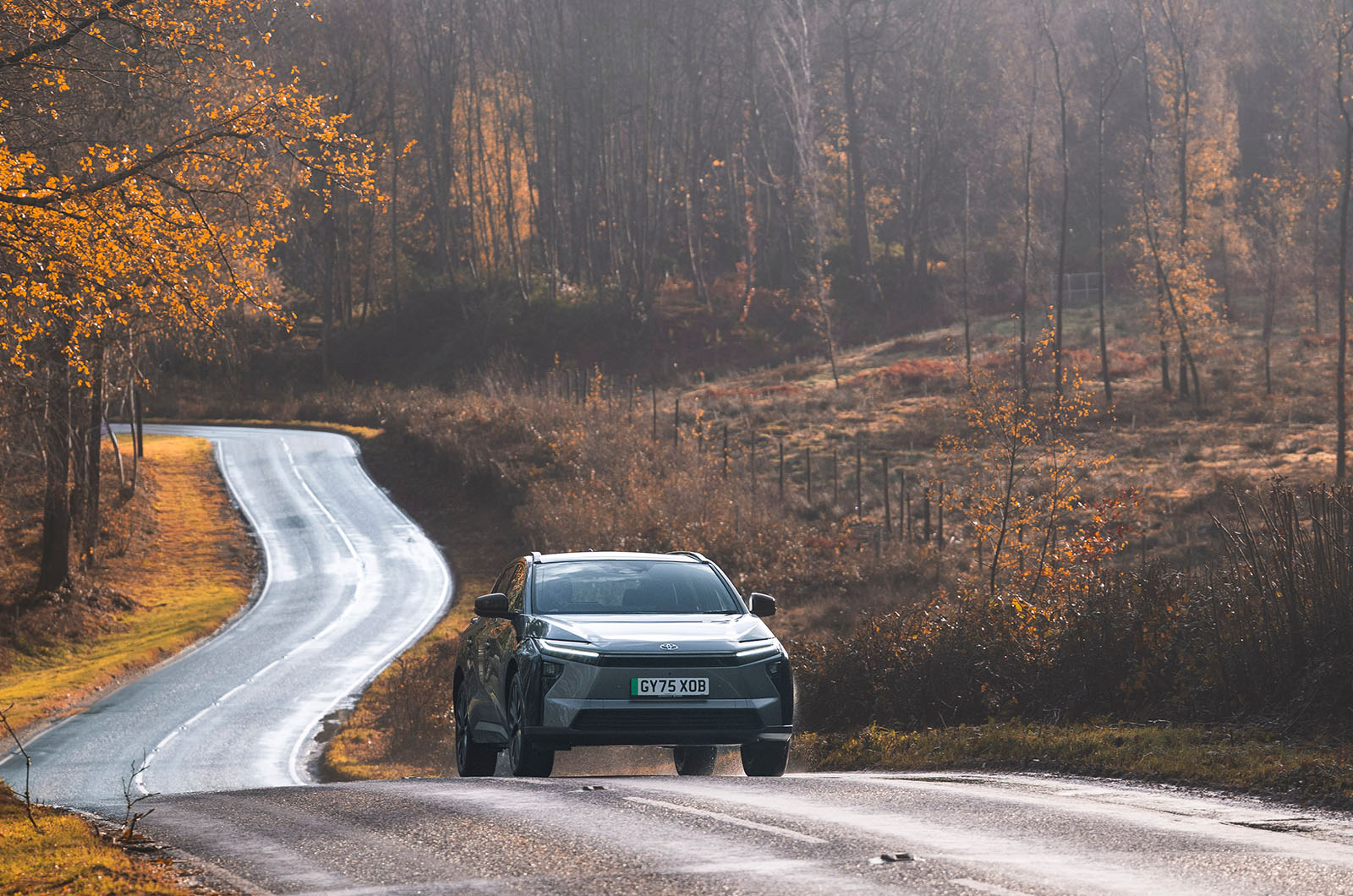
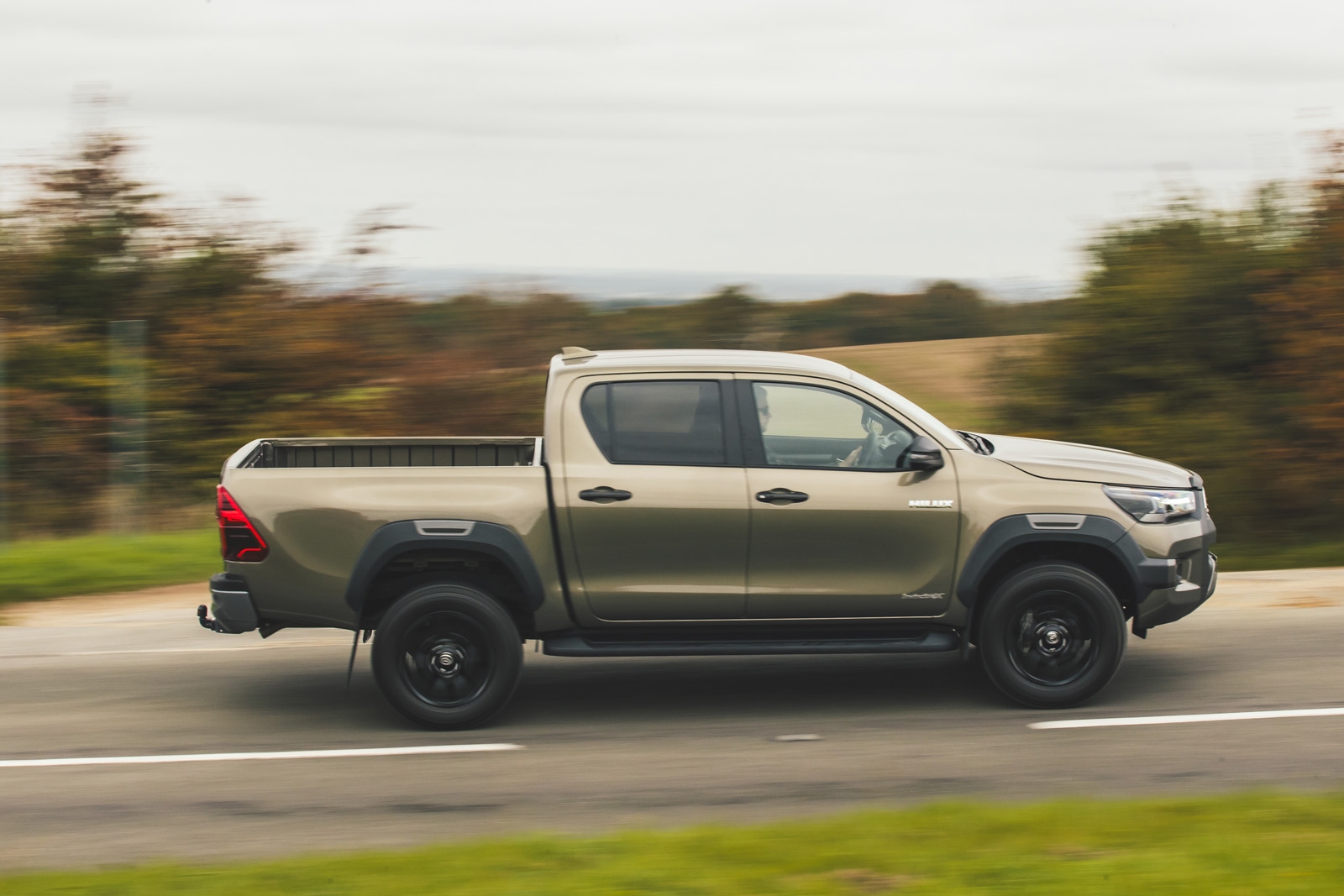
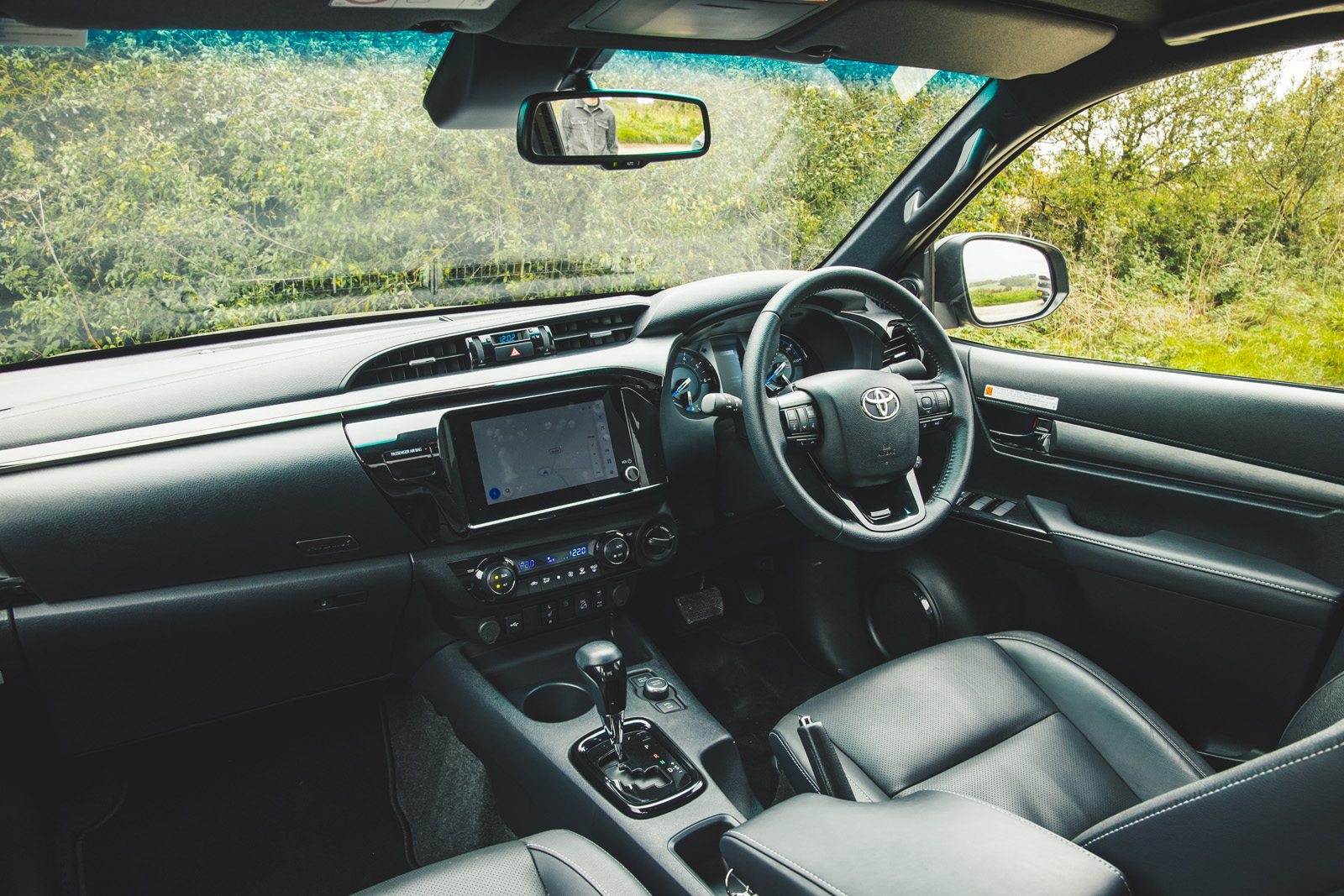
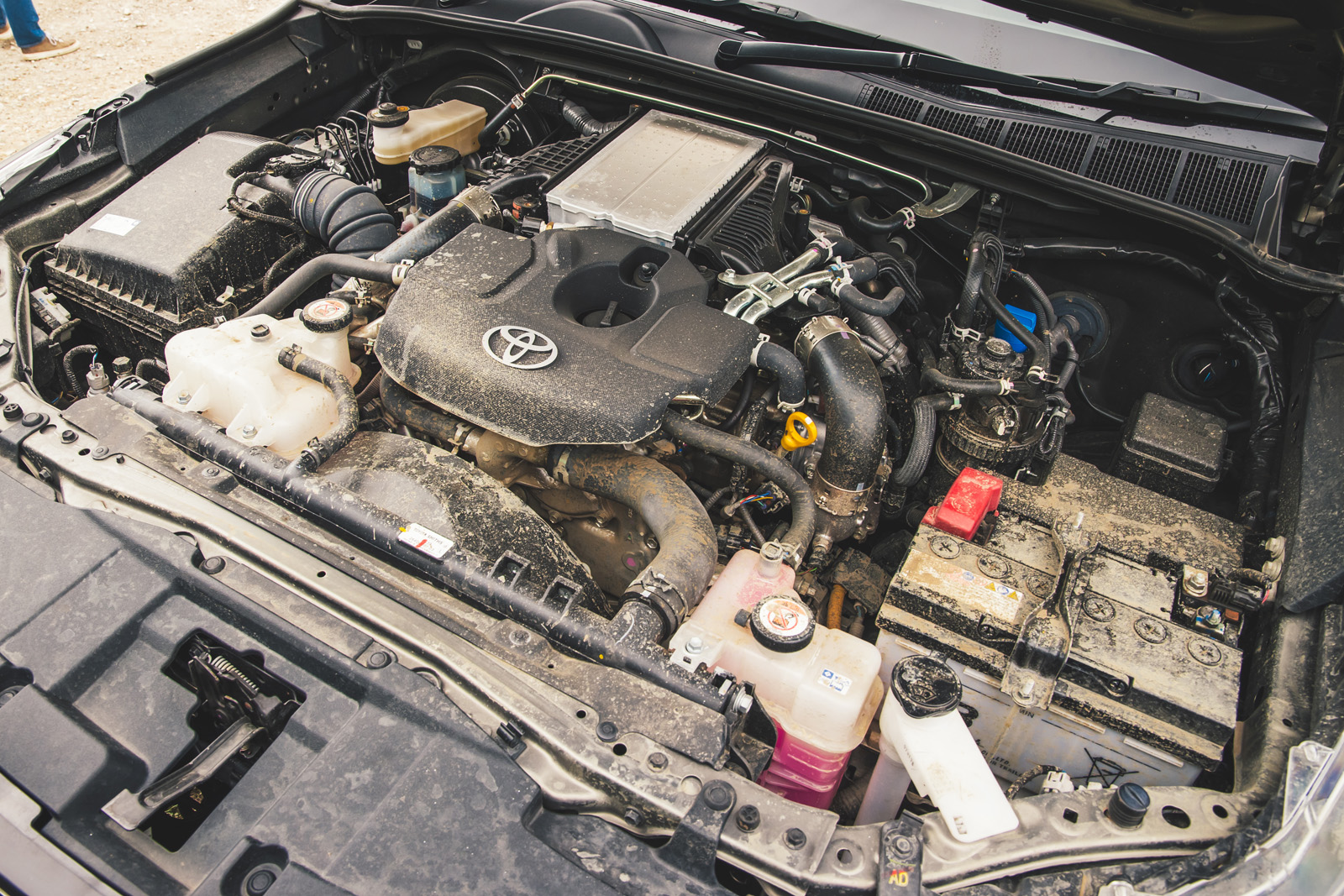

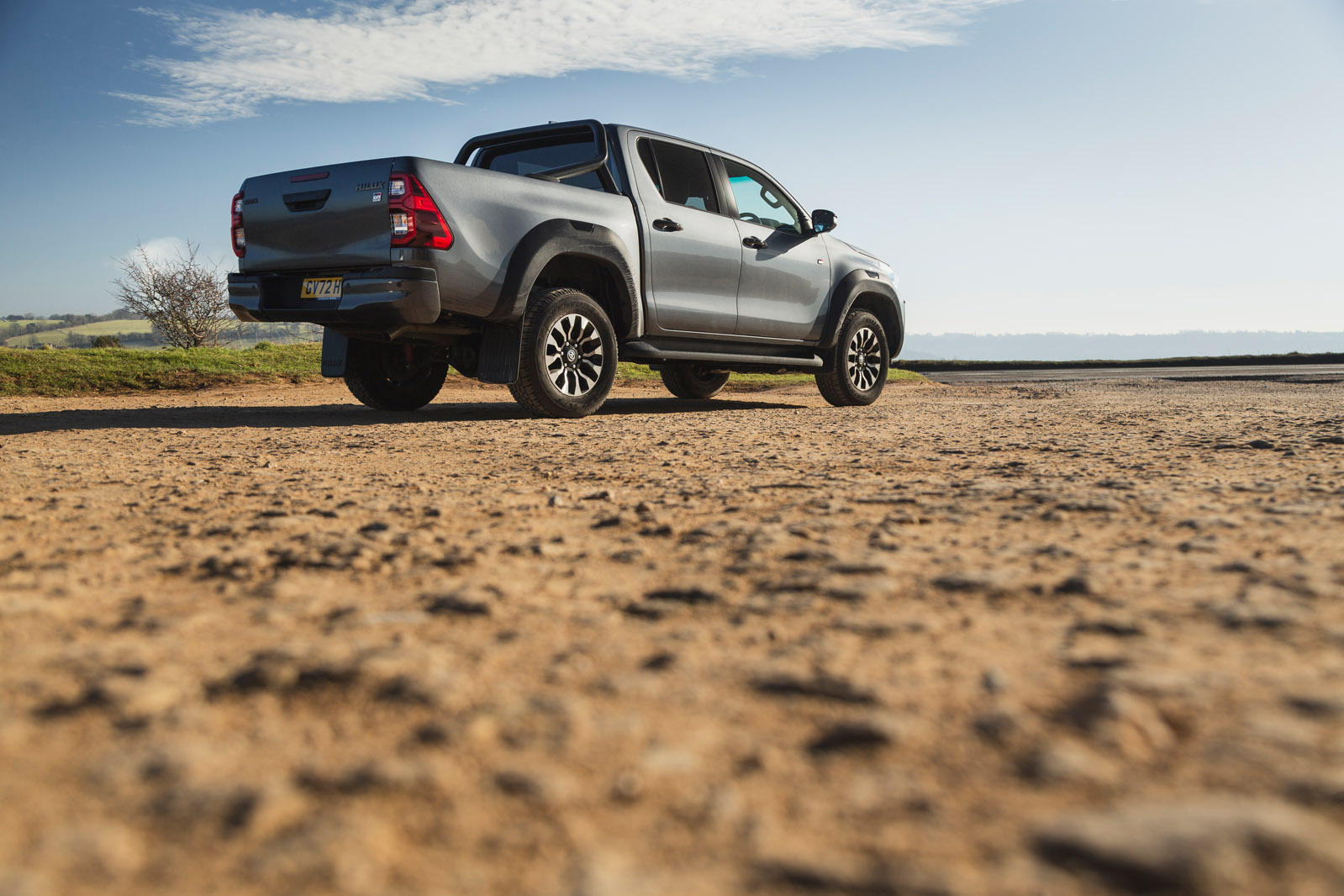

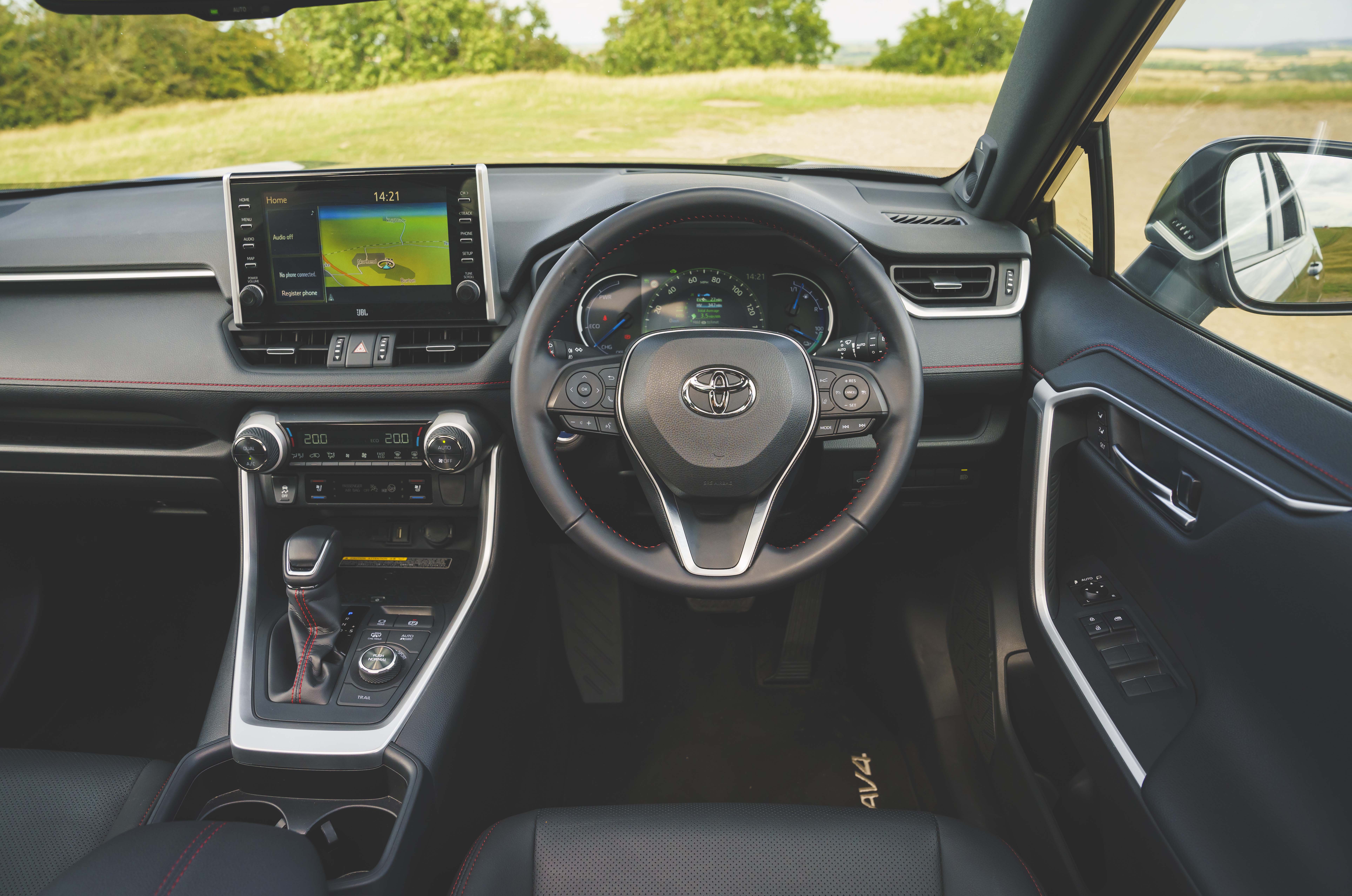
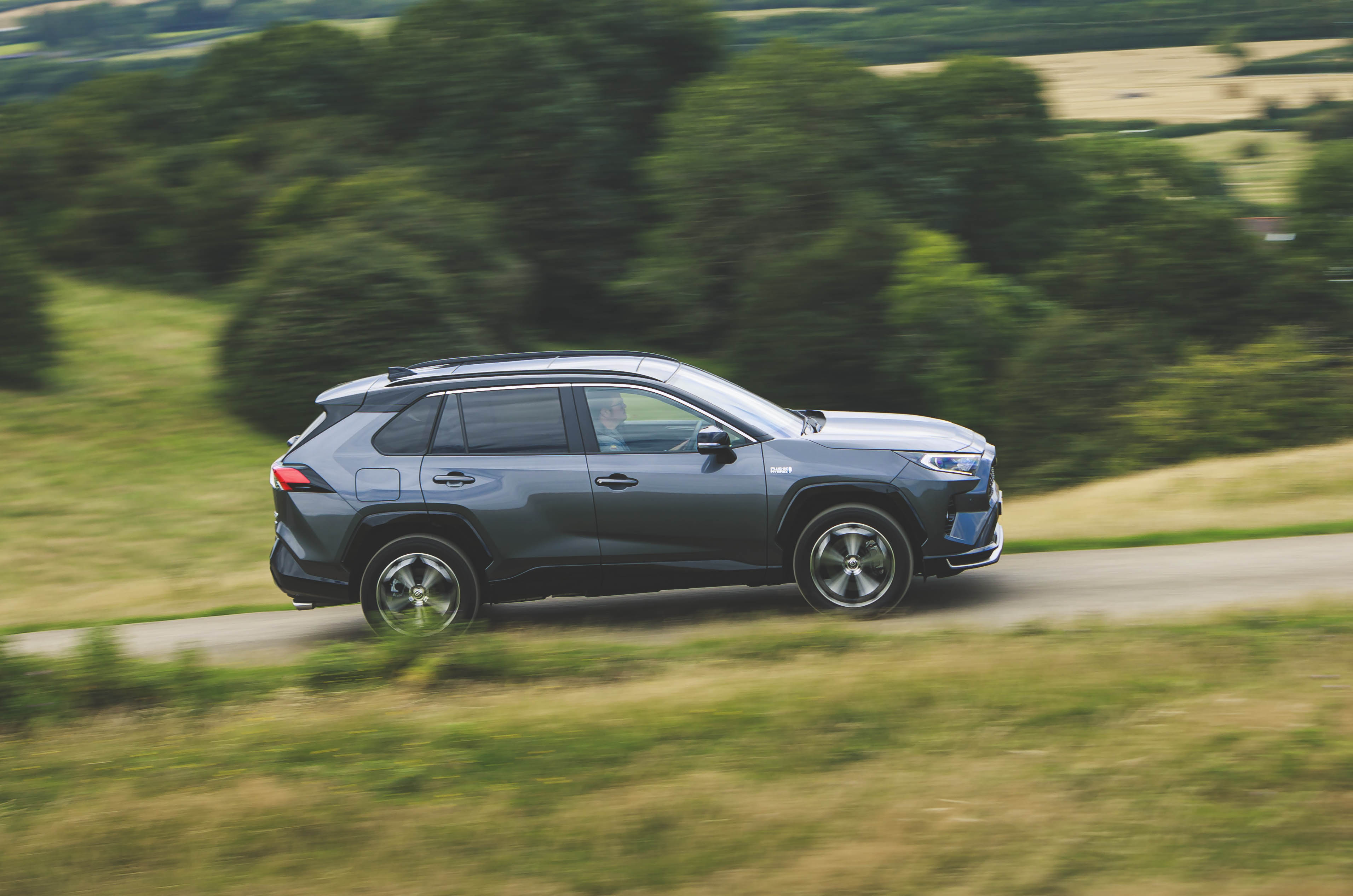
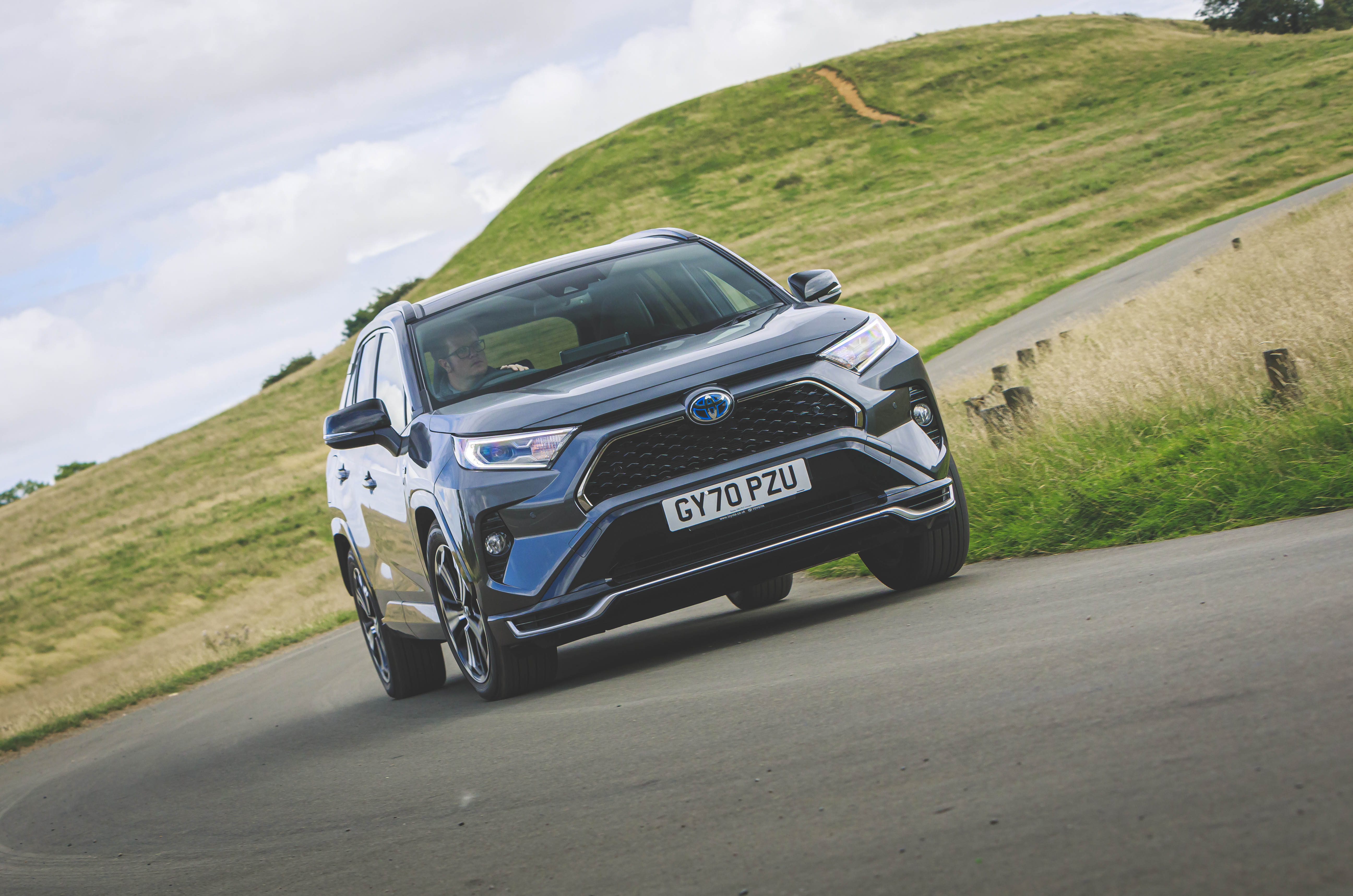


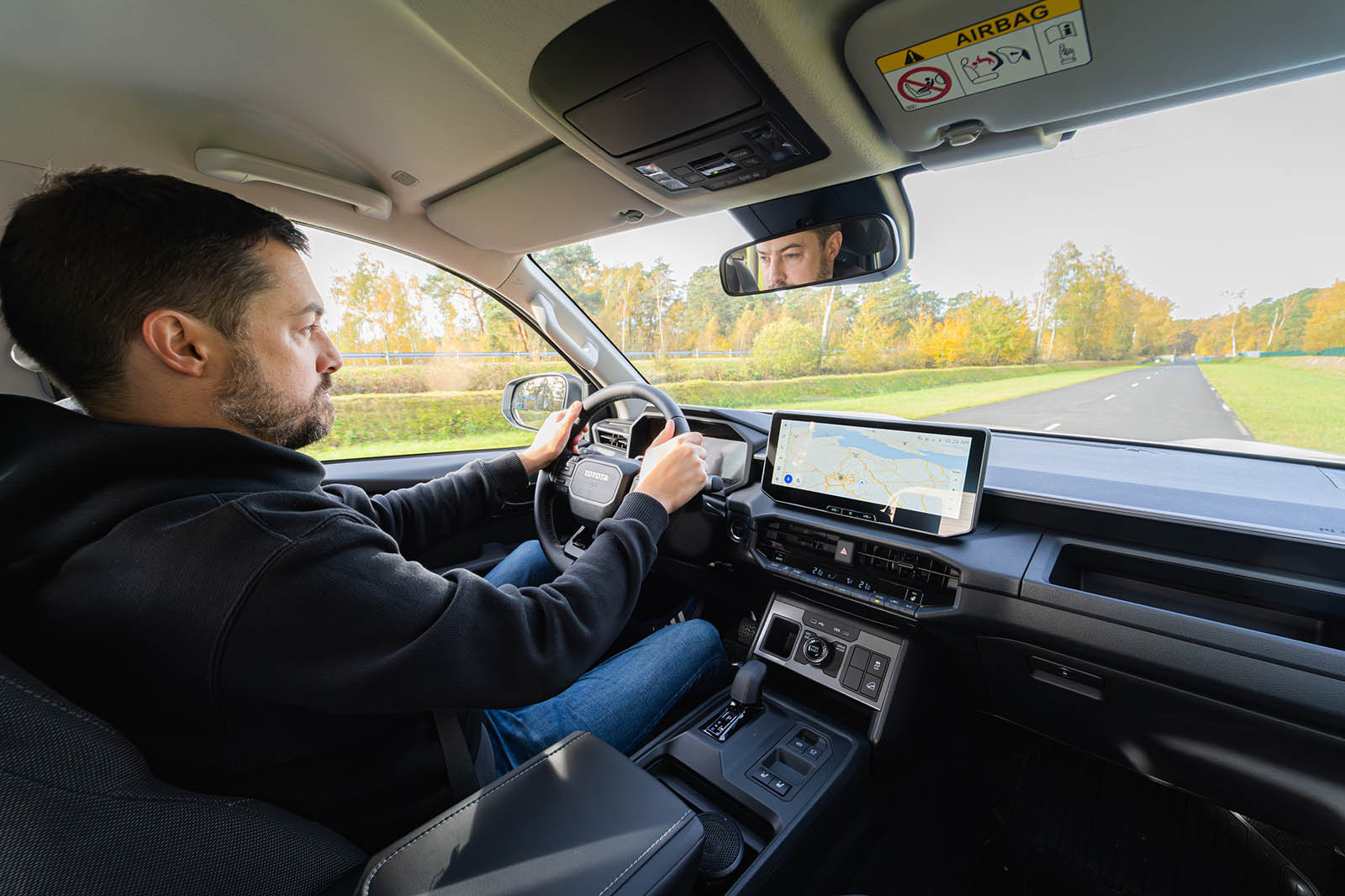

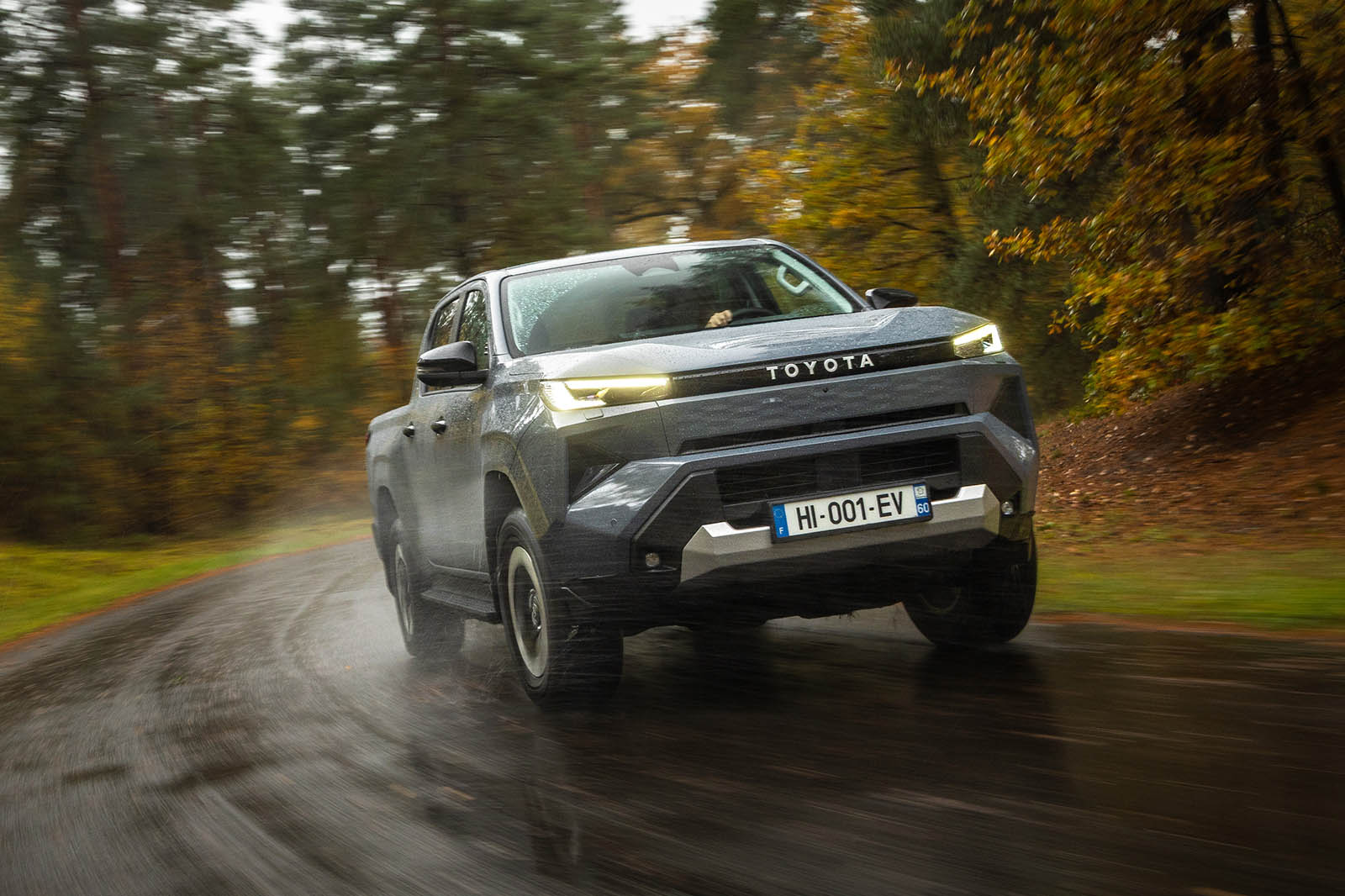

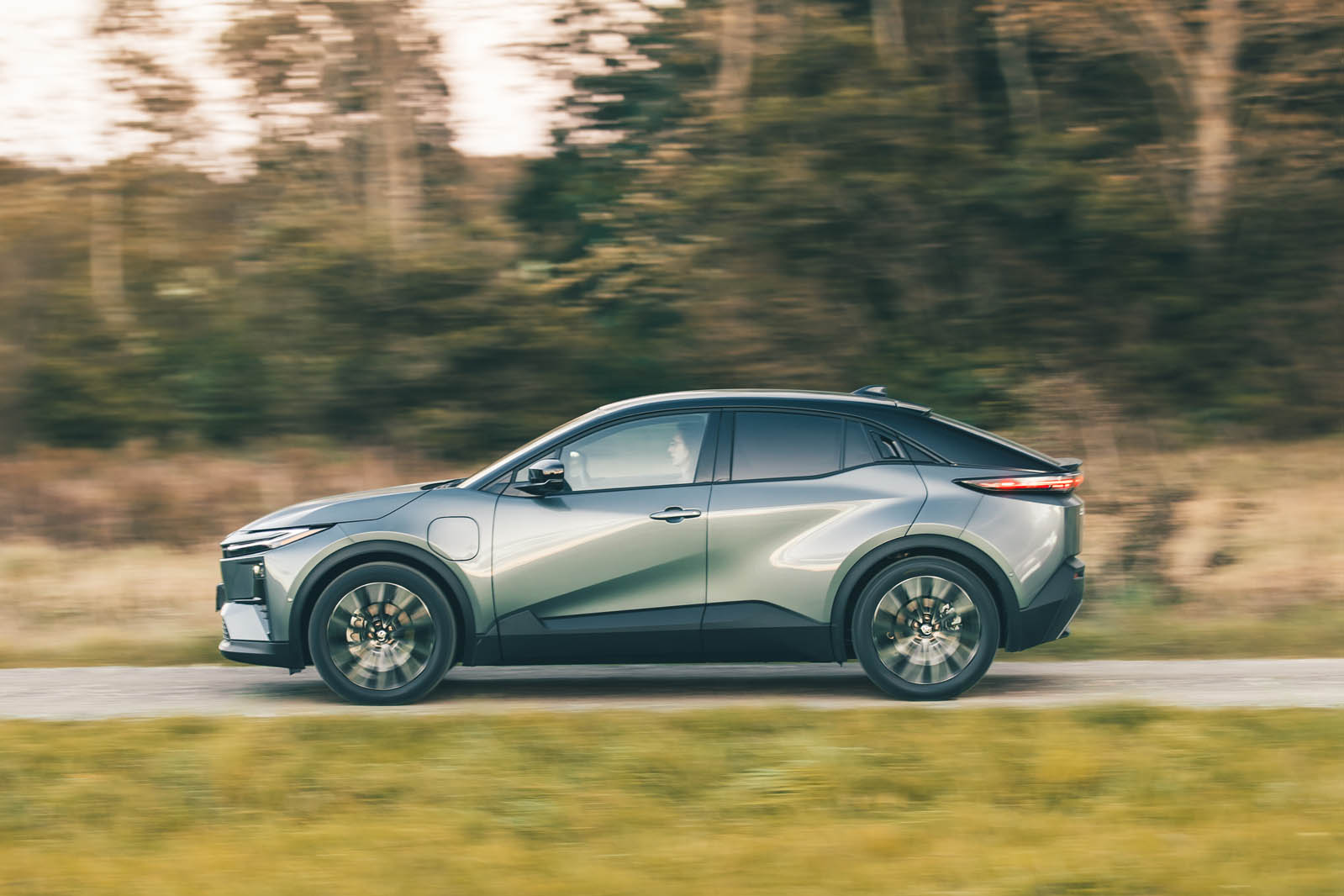
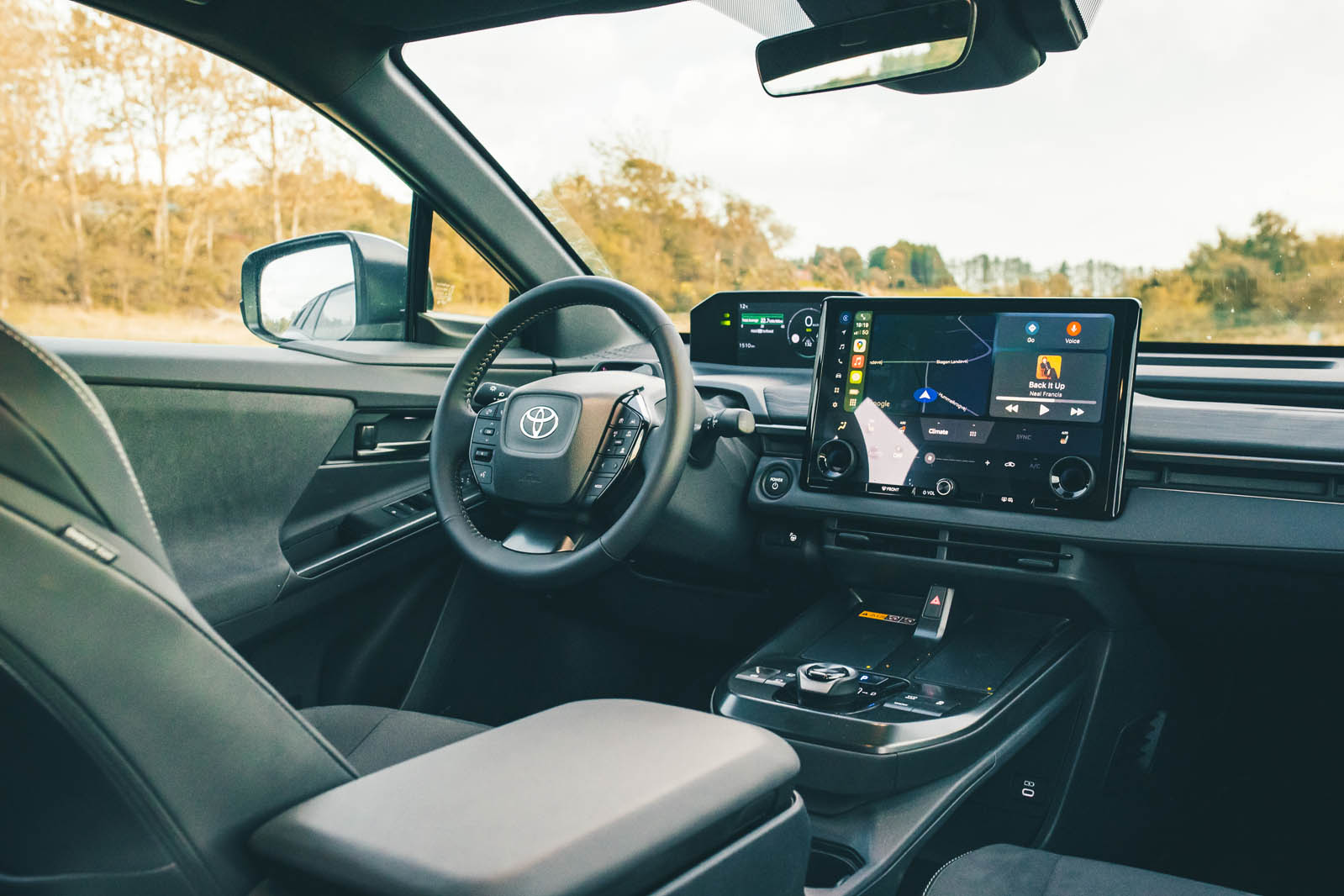
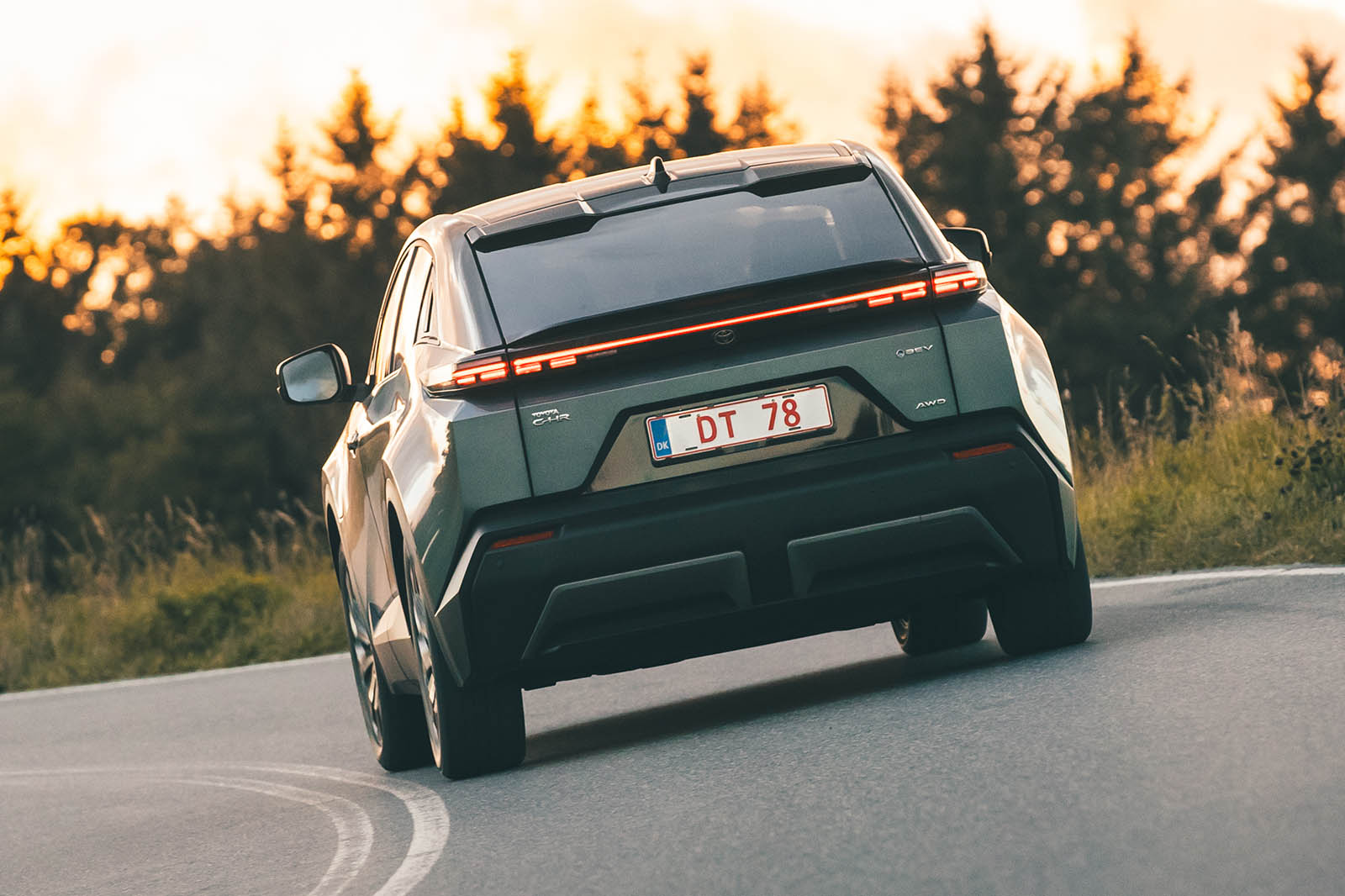
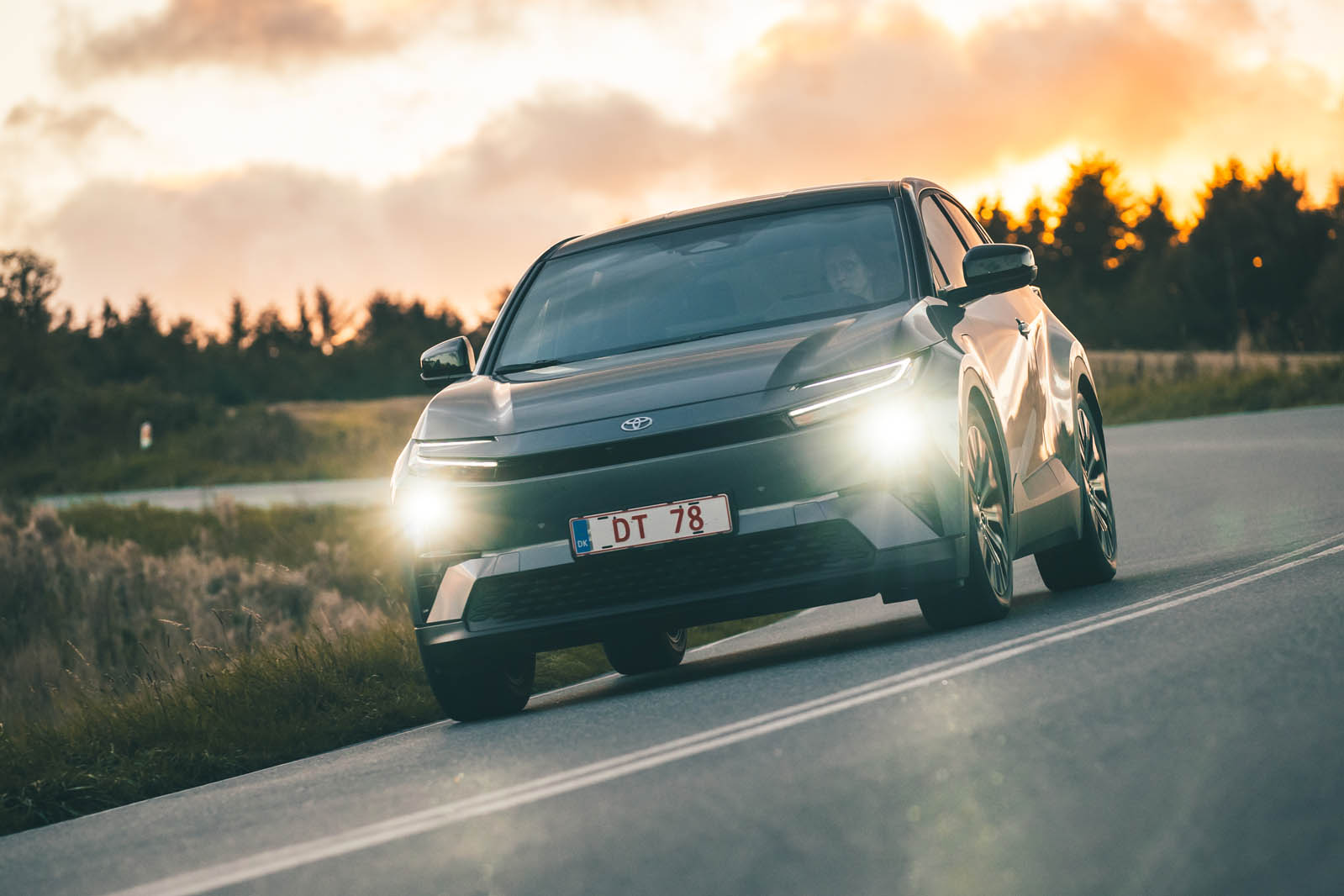
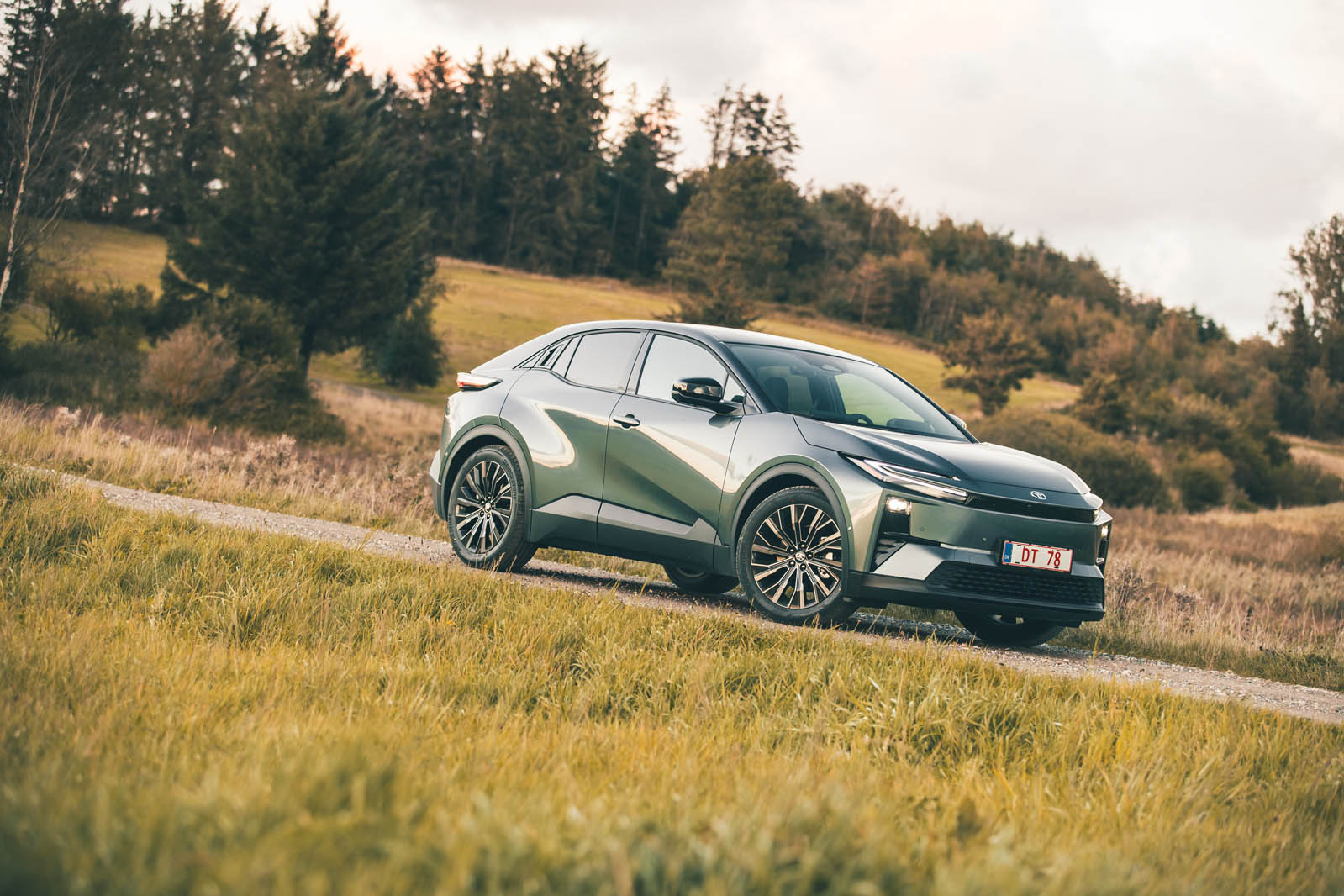
When it was first shown as the XYR concept at the 1999 Detroit motor show, the designers of the seventh generation Celica claimed - a little improbably - that it was part-inspired by a closed-wheel, open-cockpit race car of the era.
Toyota's Californian CALTY design studio had the main shaping and scraping responsibilities for the clay model, and among other things, introduced a rising waistline suggestive of their racer.
In fact, the race car link had more substance than it first appeared, not because the concept had a borderline ludicrous twin stalk rear wing planted on its backside, but because this Toyota Celica had been designed to be lighter, defter and faster. Just like a race car, in fact.
To this end Toyota decided only to make a coupe, and not the convertible and four-wheel drive versions that had sometimes previously appeared. The structural complexity and extra heft required for these models could thus be ignored, while the Celica’s front and rear overhangs were shortened to cut mass and reduce its inertial resistance to turning. That the rear suspension was for the first time double wishbone was further evidence of Toyota’s sporting intent, as was a weight-shedding campaign that saw 30kg shaved from the engine.
When the real thing turned up a few months later it looked almost the same as the show car, less the speed shop rear wing.
As hoped for, the Celica delivered in the dynamic department too. The steering was responsive enough to startle a Toyota Crown cabbie in Tokyo, the Celica’s front-drive balance defiantly resisting understeer. The bitumen-skimming driving position, a zingy engine and a set of almost uninhabitable rear seats confirmed the sensation that you were driving a genuinely sporting car, even if 145bhp sounded a long way from dangerous.
Toyota soon remedied that with a more powerful 190bhp engine, although you needed the tacho needle to dance near the danger paint to tease out the extra horses. Great if you were on the right road, but unhelpful elsewhere, which is one reason why the 190, later rebadged T-Sport, makes a rarer find.
Despite being slimmed, the seventh-generation Celica fielded a more welcoming cabin than the most recent editions, mainly because it didn’t present you with a world of varyingly sheened black plastics and workaday cloth trim.
True, this time you got shades of grey, but some of those greys were plastiminium, all were of a higher textural grade and the cabin architecture was appealingly sculpted to create a twin cockpit feel for driver and passenger. The most striking element was the beak-like tip of the centre console’s top end, an unexplained but appealing flourish.
Some models came with leather trim, in rare cases a rather attractive red, but the black leather usually fitted tends to bag up with age, making the front seats look like they’re refugees from a minicab of interstellar mileage. So cloth often makes the better choice.
A chunky left footbrace was standard, underlining the Celica’s cornering ambitions, while a pair of gaping cupholders between the front seats confirmed its likely real-world American cruiser usage pattern. So it was decently practical.
Best of all, though, was this Celica’s genuinely sporty personality. That wasn’t enough to hold back the tide of change swamping coupes by the early part of this century, the drift to SUVs, and other machinery, ending this Celica’s life at just five years. And a GT version with a big rear wing and a bodykit wasn’t going to reverse this trend.
Toyota sold a spectacular 4,129,626 examples of the species over the 35 years from 1970. And the firm is now readying its next generation car - some 18 years after production of this seventh generation ended.
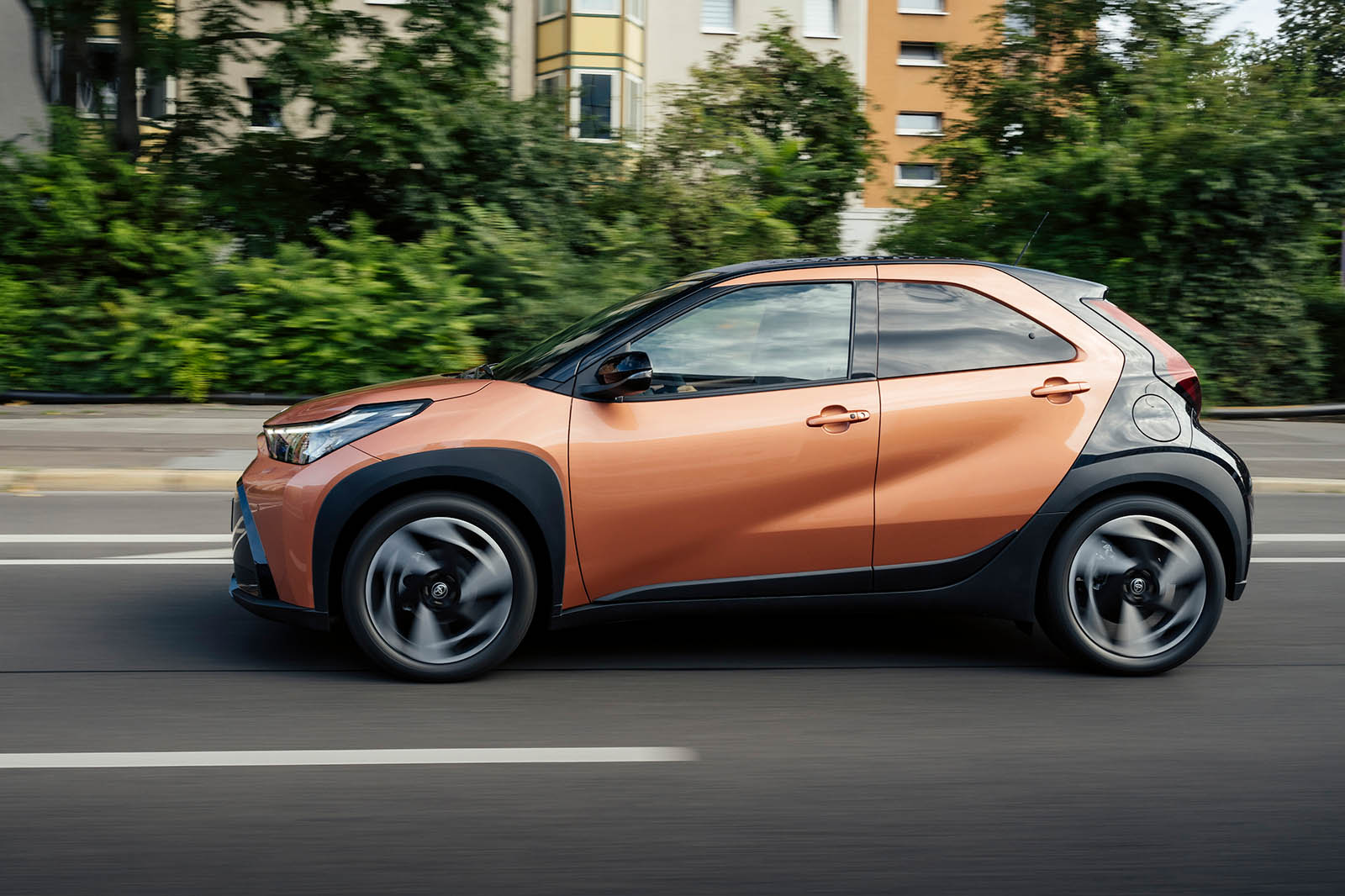
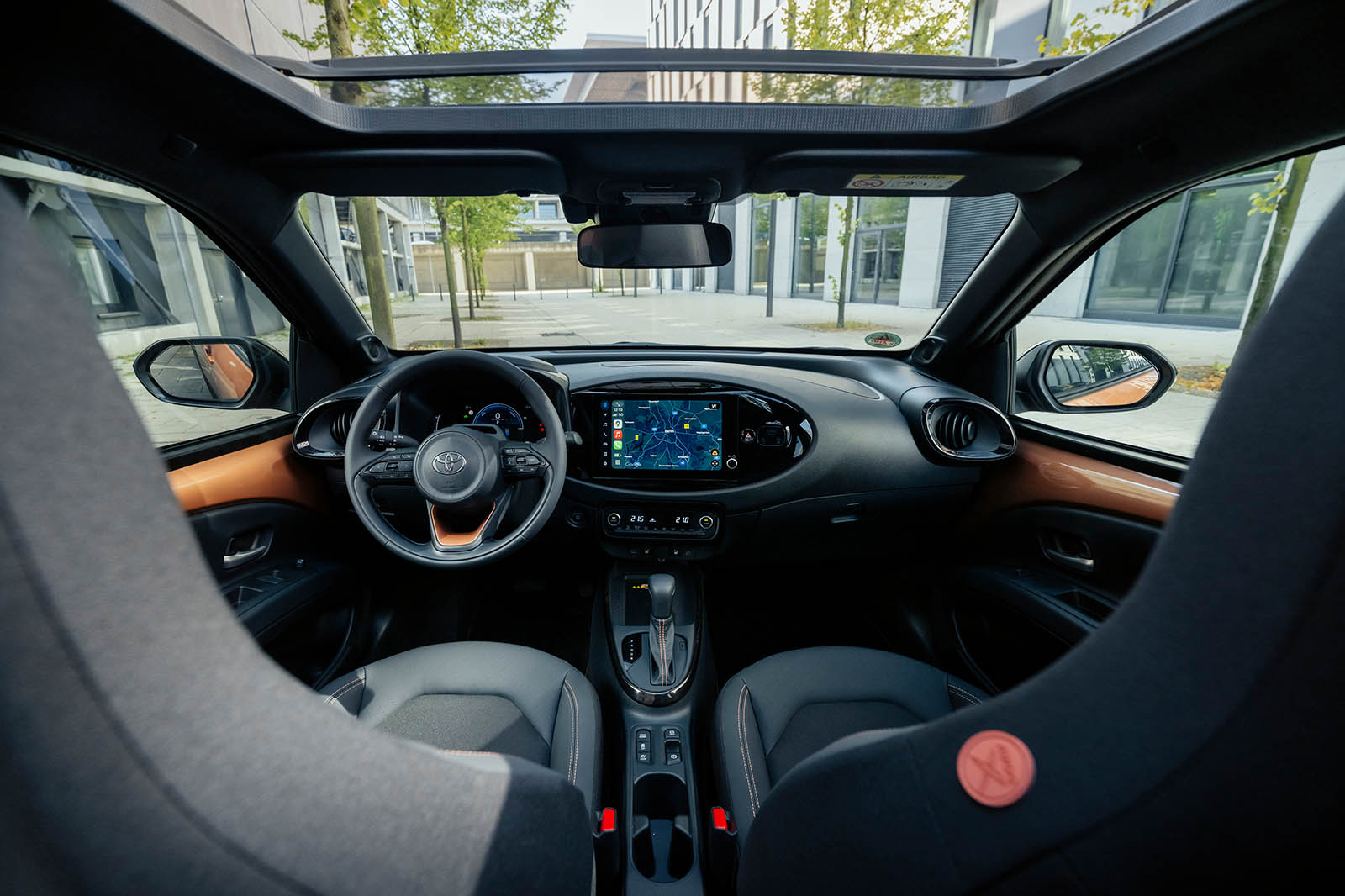
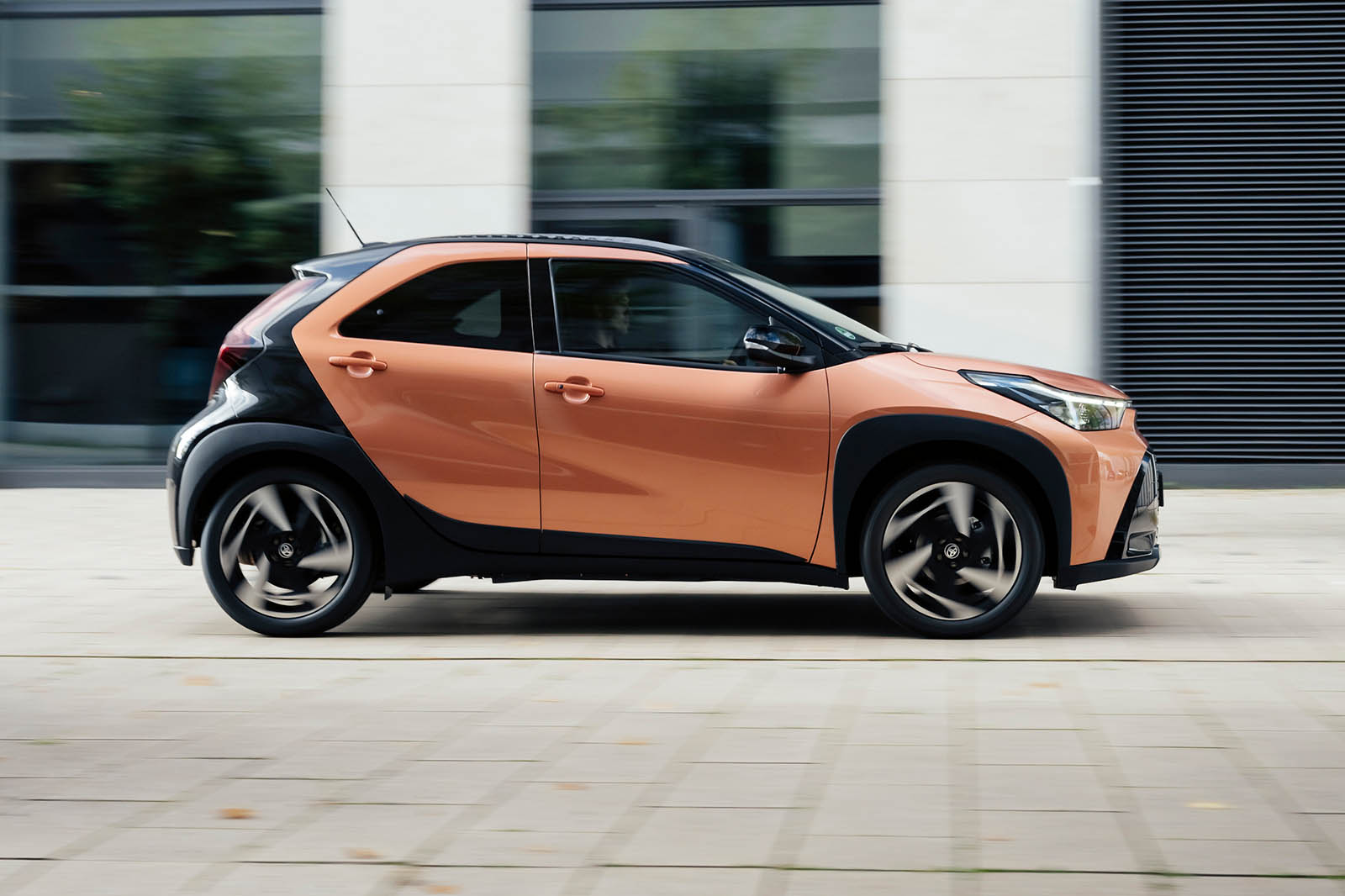
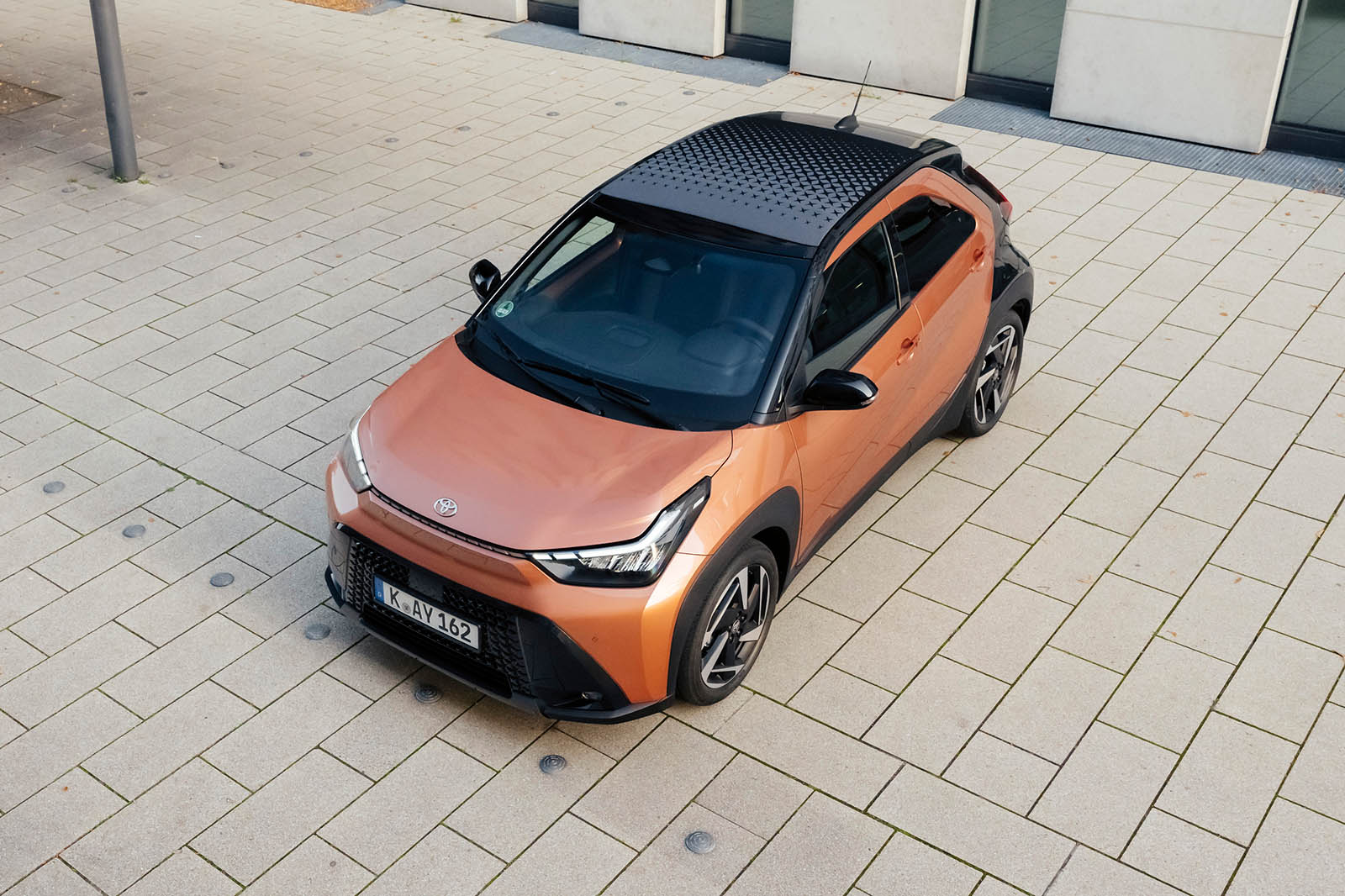
Taxi! It’s the reductive cry of many when a Prius hums into view, Toyota’s pioneering hybrid hatchback having become the ubiquitous Uber for a generation of ride-hailing devotees.
Yet as the petrol-electric model celebrates its quarter century on sale in the UK, does the incredibly efficient and relentlessly reliable Prius deserve to be seen – and appreciated – as more than just a default choice for hard-nosed mini-cabbers?
The obvious answer is yes, of course it does. In fact, the Prius is perhaps one of the most misunderstood and occasionally divisive cars to have hit the roads in the past 25 years.
When it landed on these shores in 2000, diehard petrolheads quickly named it the ‘Pious’ – a swipe at early adopting owners who were evangelical about its tech and fuel-savings.
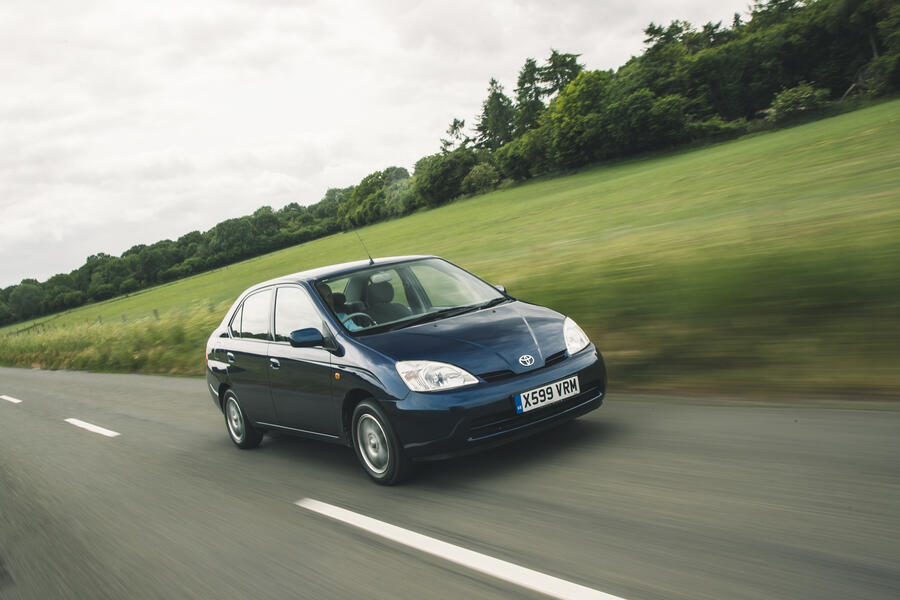
Yet it was also an unlikely Hollywood pin-up, with eco-friendly A-listers such as Leonardo DiCaprio choosing the Prius to scoot between studios.
Either way, over five generations, it has become as familiar a sight on our roads as white lines and temporary traffic lights: more than six million have been sold to date, making it the world’s most popular hybrid.
Those sheer numbers mean Toyota’s engineering brilliance is often overlooked, so it seems an ideal time to get one of the first examples together with the latest version and perhaps reappraise this dual-fuel pioneer.
As is the case today, environmental concerns were very much in the headlines when the Prius first appeared in its native Japan back in 1997, with the result that manufacturers were keen to develop cars that minimised their impact on the world’s resources.
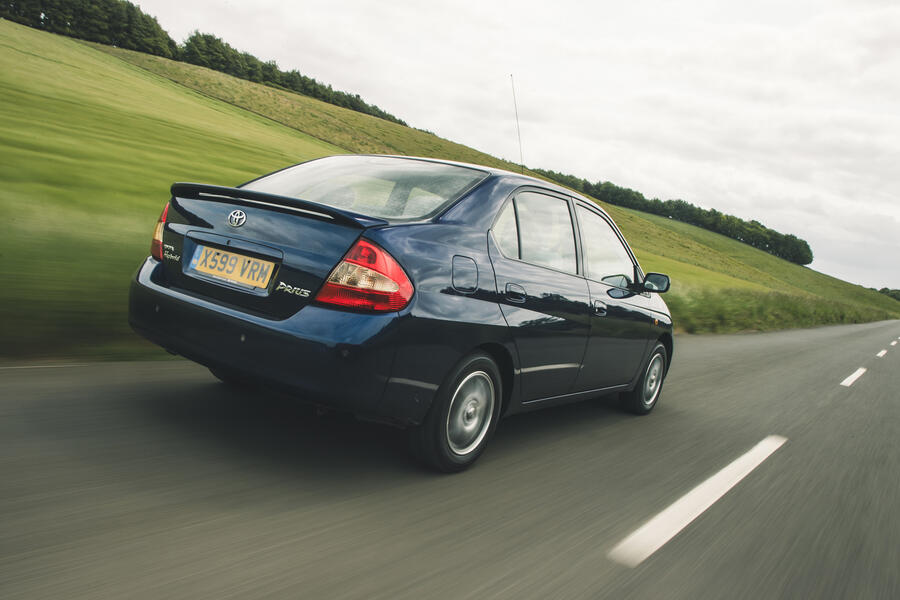
The European approach was to remain faithful to internal combustion engines, installing them in lightweight, low-drag bodies, and the Audi A2 is perhaps the most obvious example.
In Japan, however, petrol-electric hybrids were the order of the day. At roughly the same time the covers were pulled off the Prius, Honda launched its innovative Insight coupé.
Like the A2, it featured a low-calorie construction and wind-cheating bodywork, while under its snub snout was a clever powertrain that was the progenitor of today’s mild hybrids. It was styled like a concept car and built with the same obsessive attention to detail as the firm’s first-generation NSX supercar.
But whatever the Honda’s virtues, it was a sales flop – just like the Audi. Toyota’s approach was slightly different, but in many ways it was in fact more daring.
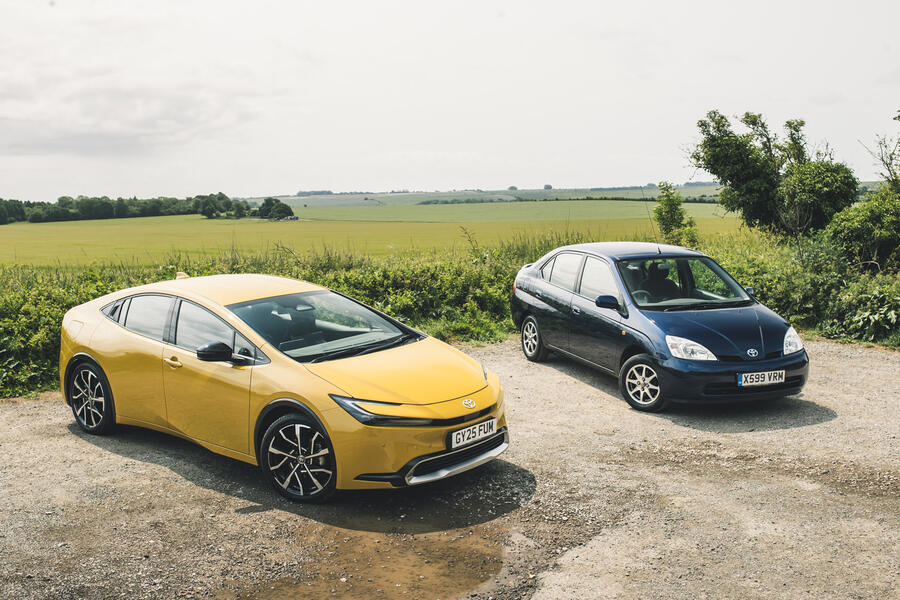
A traditional four-door saloon template made the Prius look like a far more mundane machine, but that sober suit hid a much more sophisticated drivetrain that remains largely the same today as it was all those years ago.
Essentially, it has two electric motors: the MG1 is a starter-generator similar to those in today’s mild hybrids, while the MG2 is the traction motor, which also acts as a generator.
Both of these then have to work harmoniously with the car’s petrol engine, which can be connected to the road wheels at higher speeds or when maximum performance is required, but normally it feeds electricity into the battery.
Making all of these mechanical machinations possible is the ‘power splitter’. Often referred to as a continuously variable transmission (CVT), it actually uses a planetary gearset rather than the usual belts and pulleys.
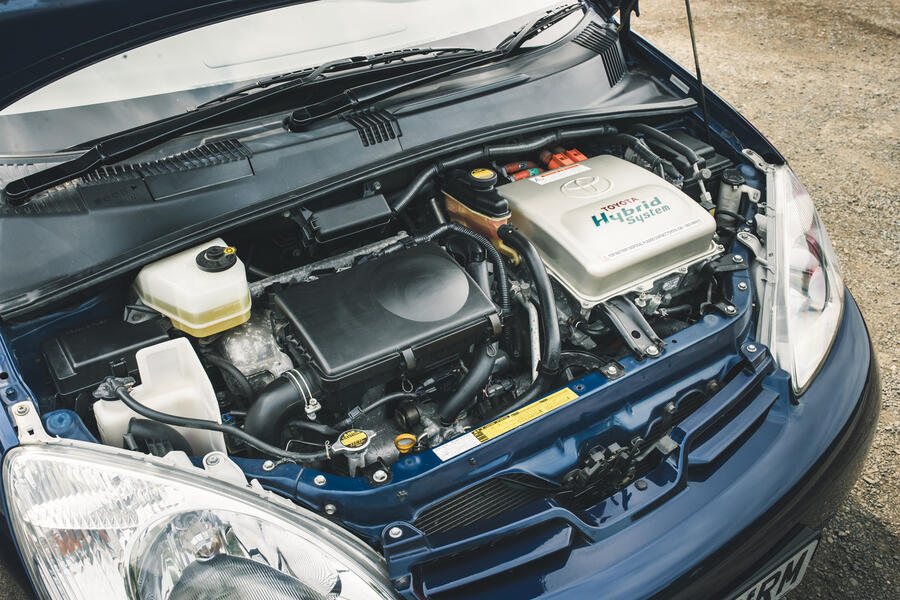
Packed together with the two motors and bolted onto the engine, it uses computers to decide where best to send power depending on the prevailing conditions, allowing it to operate as either a series or a parallel hybrid. Clever, eh?
Approach the Mk1 today and you would never guess at the complexity lurking within. Even in-period, it was a fairly nondescript presence: its tried-and-tested three-box template was at odds with family-friendly contemporaries such as the audaciously angular ‘New Edge’ exterior of the first-generation Ford Focus.
Only when you climb aboard does the Prius start to reveal its status as a cutting-edge practitioner of the petrol-electric art. The squidgy seats trimmed in kitsch crushed velour are pure Tokyo taxi, plus there’s the expected expanse of hard grey plastic.
But set high in the centre of the dashboard is a full LCD digital instrument cluster, while the centre console houses an actual touchscreen. In many respects the OG hybrid car feels bang up to date to drive, which is largely due to the fact that any current hybrid Toyota is running essentially the same powertrain.
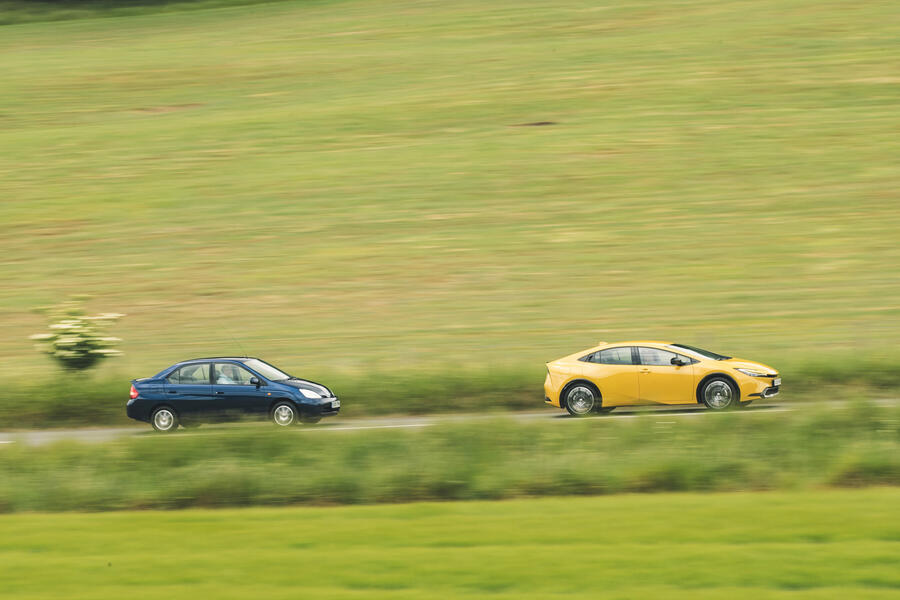
Pull the chunky, dashboard-mounted gear selector into drive and squeeze the throttle, and the Toyota pulls away in silent EV mode.
Push the accelerator a little harder and the engine fires into life, while pinning it into the carpet for maximum forward motion results in revs being held somewhere around peak torque as the power splitter feeds the generator’s demand for maximum electricity (it’s this behaviour that hoodwinked many to assume the Prius had a conventional CVT transmission).
With a combined 98bhp on tap, progress is leisurely. The ICE has to be worked hard, but the uninterrupted, EV-style delivery and the option of enhanced regenerative braking with the B mode gives this Prius surprisingly contemporary vibes. It’s refined, too, with the 1.5-litre motor’s efforts being suppressed enough not to grate even when pressing on.

According to the trip computer it’s also returning an easy 50mpg-plus, despite being driven fairly briskly. Although, like many hybrids, the inconsistent transition from regenerative to friction braking makes it almost impossible to slow smoothly in a hurry.
However, it’s the chassis that really dates the car. Its slow-witted steering, skinny-tyred deficit of grip and loose body control prove to be a reminder of a time when, sports cars aside, Toyotas were faithful and functional but rarely fun.
Still, the upshot is a nicely absorbent – if floaty – ride that seems pretty well suited to today’s scarred road surfaces. Yet it’s easy to see why the Prius succeeded. Despite its astonishingly complicated powertrain, it’s easy to drive, comfortable, spacious and, crucially, extremely reliable and cost-effective to run.
So it was no surprise when second- and third-generation models arrived over the coming years. The looks became more arresting and there was the addition of more power-dense lithium-ion batteries and even a plug-in option, but the basic recipe remained the same.
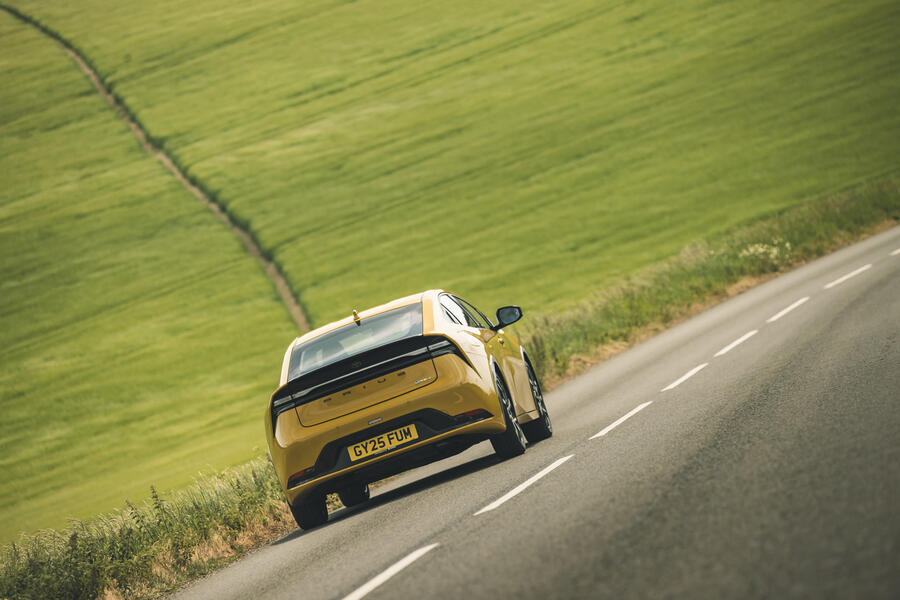
When the Mk4 Prius arrived in 2016 it was built on the brand’s TNGA architecture, which also meant a decent dose of driver engagement. Even so, when that car’s production run came to an end in 2022, Toyota UK decided against bringing its replacement to our shores.
With its C-HR crossover and collection of Corollas, the manufacturer reckoned it had all its hybrid bases covered, that there was no room on the price lists for a Prius. Then late last year Toyota relented, reinstating the plug-in version in showrooms.
Compared with its dumpy ancestor, the sleek new car is a real feast for the eyes. Snapper Jack Harrison suggests that our test car’s sunny hue and teardrop profile give it the look of a lemon, but to this tester it’s a visual treat.
Stick some flush wheel covers on and it could have passed as a futuristic automotive background model in Blade Runner 2049. This attention to detail extends to its engineering.
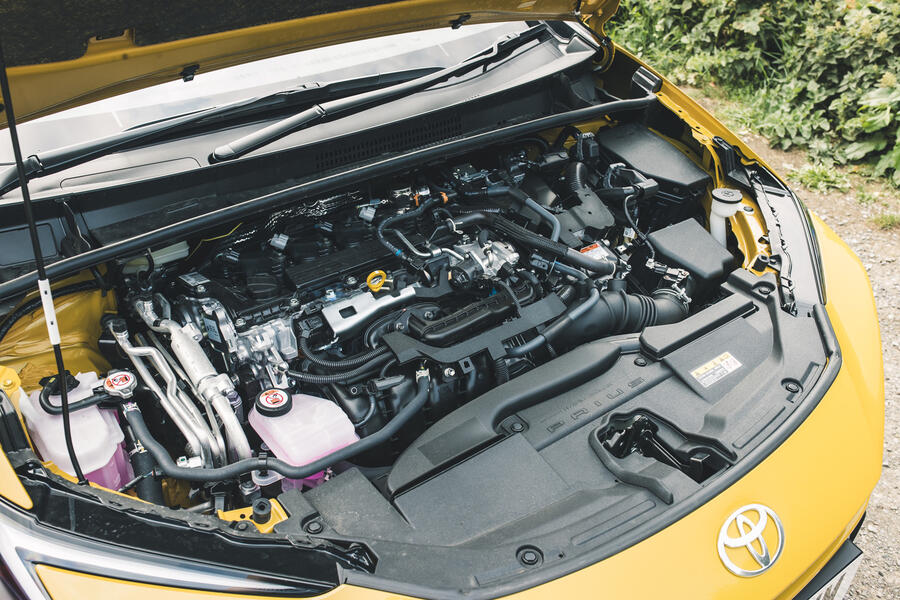
The latest hybrid system works in much the same way as ever, but it has been honed and refined for enhanced power and efficiency. Moreover, despite greater safety, a stiffer shell and a larger lithium ion battery that gives a claimed EV range of 53 miles, the Toyota tips the scales at as little as 1545kg, making it a flyweight in a world full of two-tonne-plus EVs and SUVs.
And this is all before you consider the way it drives. With 220bhp available, it accelerates with the eagerness of a hot hatch, and the relationship between throttle, motor, engine and power delivery is now carefully honed to deliver a more natural feel with almost none of the elastic-feeling CVT lag.
There’s also a rare fluidity to the chassis, which allows the car to scythe quickly and accurately through corners yet ride the lumps and bumps with impressive deftness, even on our example’s larger 19in rims.
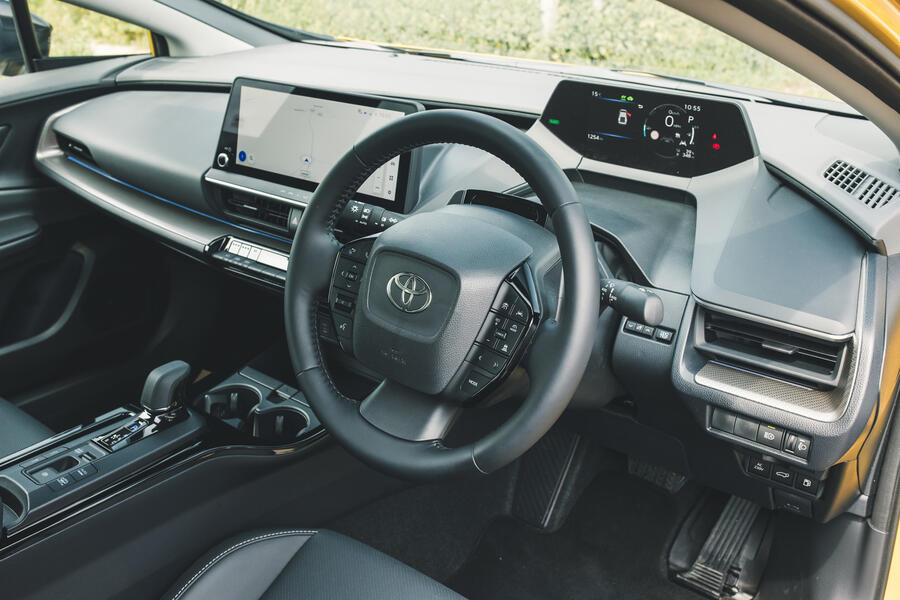
Better still, the brakes are now brilliant, offering a firm pedal and a progressive action. This is a genuinely satisfying car to steer, one that might just tempt you to abandon the well-worn groove of your commute and seek a more interesting alternative back home.
If you love cars for their innovative design and engineering as much as you do for the way they go down the road, then you’ll have plenty of time for the Prius. And as with the older models, once you’ve tuned into the hybrid’s way of doing things there’s a peculiar satisfaction in getting the best out of it.
Moreover, in the clarity of its thinking and unwillingness to follow the herd, it captures the spirit of Citroën at the height of its hydropneumatic pomp, or Saab at its single-minded best. After 25 years and millions of sales, the Prius doesn’t need to justify its existence: like it or loathe it, the Toyota is a bonafide success.
Who knows what the next quarter century holds for the Prius? But whatever happens we should pay it our dues and recognise this hybrid trailblazer as one of the most influential cars yet produced. What we do know, though, is that if you’re a minicab driver, you’ve never had it so good.
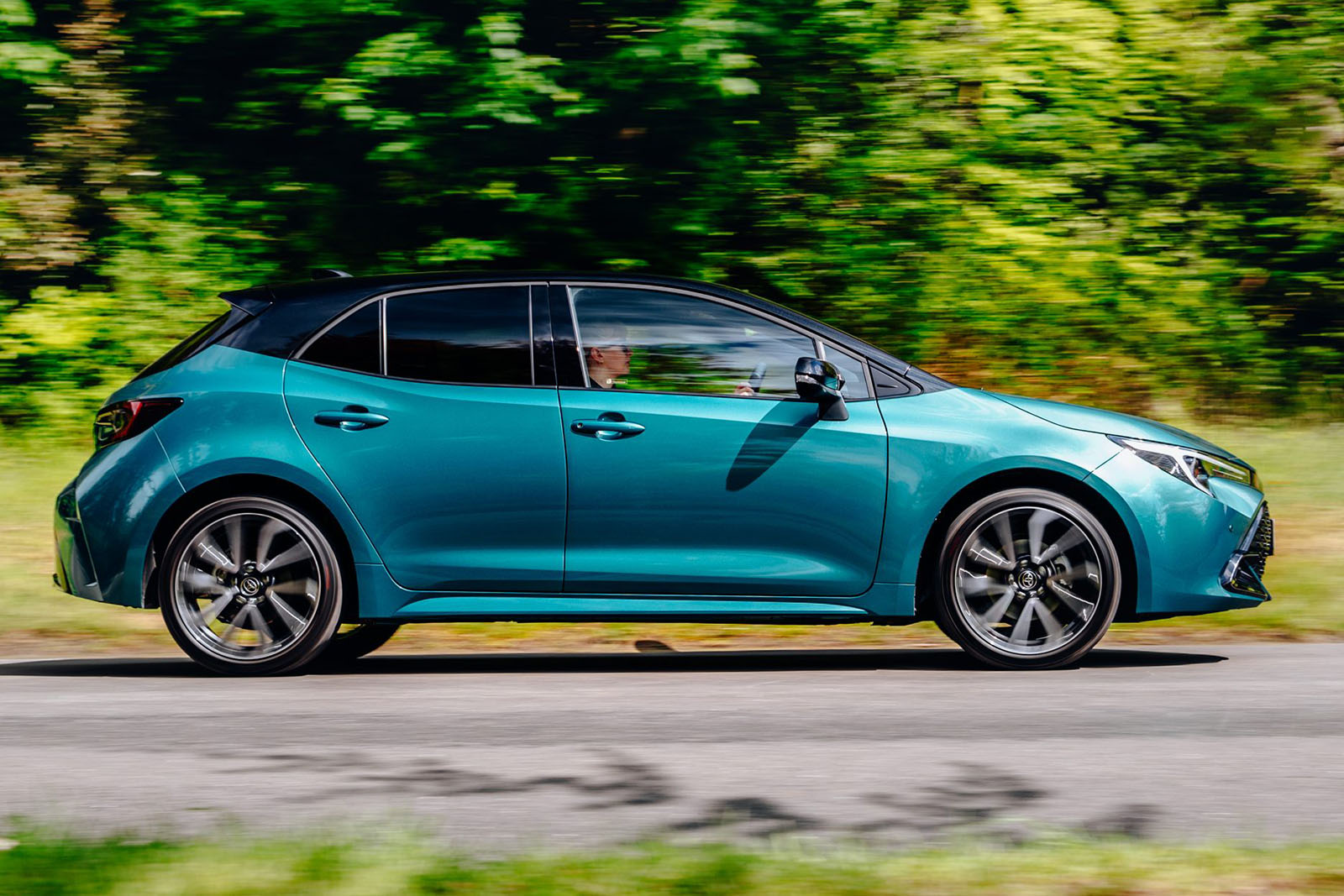
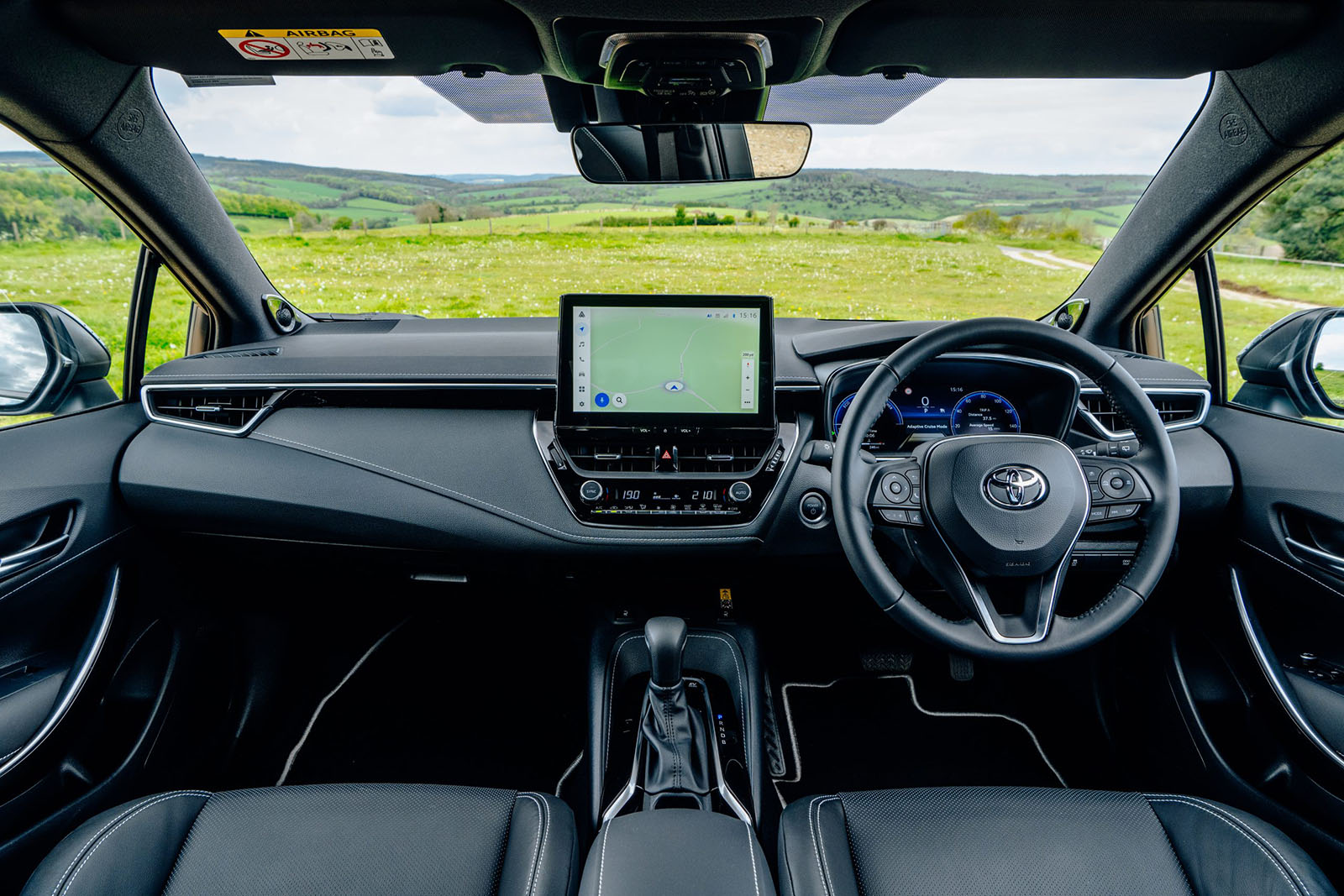
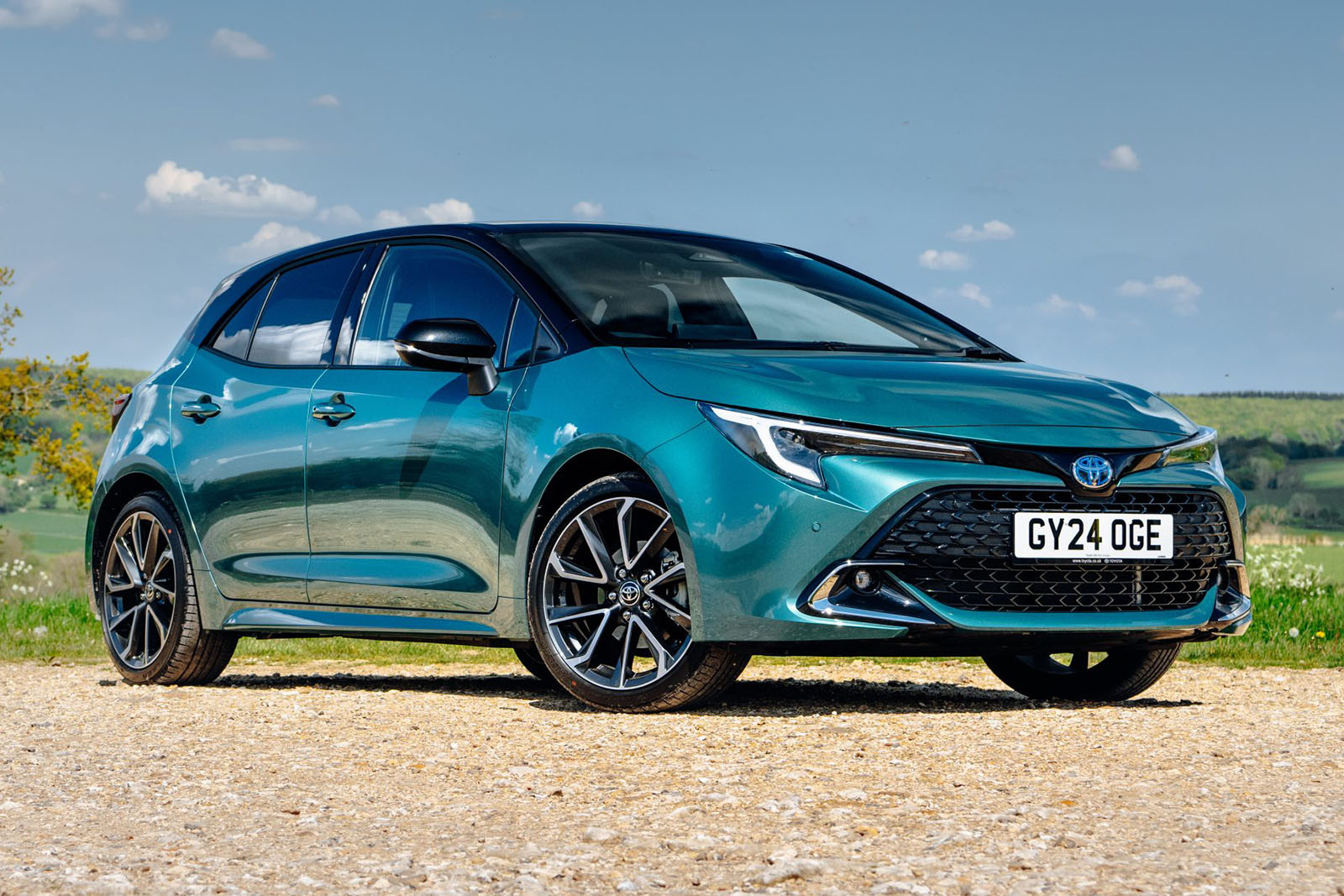
Taxi! It’s the reductive cry of many when a Prius hums into view, Toyota’s pioneering hybrid hatchback having become the ubiquitous Uber for a generation of ride-hailing devotees.
Yet as the petrol-electric model celebrates its quarter century on sale in the UK, does the incredibly efficient and relentlessly reliable Prius deserve to be seen – and appreciated – as more than just a default choice for hard-nosed mini-cabbers?
The obvious answer is yes, of course it does. In fact, the Prius is perhaps one of the most misunderstood and occasionally divisive cars to have hit the roads in the past 25 years.
When it landed on these shores in 2000, diehard petrolheads quickly named it the ‘Pious’ – a swipe at early adopting owners who were evangelical about its tech and fuel-savings.

Yet it was also an unlikely Hollywood pin-up, with eco-friendly A-listers such as Leonardo DiCaprio choosing the Prius to scoot between studios.
Either way, over five generations, it has become as familiar a sight on our roads as white lines and temporary traffic lights: more than six million have been sold to date, making it the world’s most popular hybrid.
Those sheer numbers mean Toyota’s engineering brilliance is often overlooked, so it seems an ideal time to get one of the first examples together with the latest version and perhaps reappraise this dual-fuel pioneer.
As is the case today, environmental concerns were very much in the headlines when the Prius first appeared in its native Japan back in 1997, with the result that manufacturers were keen to develop cars that minimised their impact on the world’s resources.

The European approach was to remain faithful to internal combustion engines, installing them in lightweight, low-drag bodies, and the Audi A2 is perhaps the most obvious example.
In Japan, however, petrol-electric hybrids were the order of the day. At roughly the same time the covers were pulled off the Prius, Honda launched its innovative Insight coupé.
Like the A2, it featured a low-calorie construction and wind-cheating bodywork, while under its snub snout was a clever powertrain that was the progenitor of today’s mild hybrids. It was styled like a concept car and built with the same obsessive attention to detail as the firm’s first-generation NSX supercar.
But whatever the Honda’s virtues, it was a sales flop – just like the Audi. Toyota’s approach was slightly different, but in many ways it was in fact more daring.

A traditional four-door saloon template made the Prius look like a far more mundane machine, but that sober suit hid a much more sophisticated drivetrain that remains largely the same today as it was all those years ago.
Essentially, it has two electric motors: the MG1 is a starter-generator similar to those in today’s mild hybrids, while the MG2 is the traction motor, which also acts as a generator.
Both of these then have to work harmoniously with the car’s petrol engine, which can be connected to the road wheels at higher speeds or when maximum performance is required, but normally it feeds electricity into the battery.
Making all of these mechanical machinations possible is the ‘power splitter’. Often referred to as a continuously variable transmission (CVT), it actually uses a planetary gearset rather than the usual belts and pulleys.

Packed together with the two motors and bolted onto the engine, it uses computers to decide where best to send power depending on the prevailing conditions, allowing it to operate as either a series or a parallel hybrid. Clever, eh?
Approach the Mk1 today and you would never guess at the complexity lurking within. Even in-period, it was a fairly nondescript presence: its tried-and-tested three-box template was at odds with family-friendly contemporaries such as the audaciously angular ‘New Edge’ exterior of the first-generation Ford Focus.
Only when you climb aboard does the Prius start to reveal its status as a cutting-edge practitioner of the petrol-electric art. The squidgy seats trimmed in kitsch crushed velour are pure Tokyo taxi, plus there’s the expected expanse of hard grey plastic.
But set high in the centre of the dashboard is a full LCD digital instrument cluster, while the centre console houses an actual touchscreen. In many respects the OG hybrid car feels bang up to date to drive, which is largely due to the fact that any current hybrid Toyota is running essentially the same powertrain.

Pull the chunky, dashboard-mounted gear selector into drive and squeeze the throttle, and the Toyota pulls away in silent EV mode.
Push the accelerator a little harder and the engine fires into life, while pinning it into the carpet for maximum forward motion results in revs being held somewhere around peak torque as the power splitter feeds the generator’s demand for maximum electricity (it’s this behaviour that hoodwinked many to assume the Prius had a conventional CVT transmission).
With a combined 98bhp on tap, progress is leisurely. The ICE has to be worked hard, but the uninterrupted, EV-style delivery and the option of enhanced regenerative braking with the B mode gives this Prius surprisingly contemporary vibes. It’s refined, too, with the 1.5-litre motor’s efforts being suppressed enough not to grate even when pressing on.

According to the trip computer it’s also returning an easy 50mpg-plus, despite being driven fairly briskly. Although, like many hybrids, the inconsistent transition from regenerative to friction braking makes it almost impossible to slow smoothly in a hurry.
However, it’s the chassis that really dates the car. Its slow-witted steering, skinny-tyred deficit of grip and loose body control prove to be a reminder of a time when, sports cars aside, Toyotas were faithful and functional but rarely fun.
Still, the upshot is a nicely absorbent – if floaty – ride that seems pretty well suited to today’s scarred road surfaces. Yet it’s easy to see why the Prius succeeded. Despite its astonishingly complicated powertrain, it’s easy to drive, comfortable, spacious and, crucially, extremely reliable and cost-effective to run.
So it was no surprise when second- and third-generation models arrived over the coming years. The looks became more arresting and there was the addition of more power-dense lithium-ion batteries and even a plug-in option, but the basic recipe remained the same.

When the Mk4 Prius arrived in 2016 it was built on the brand’s TNGA architecture, which also meant a decent dose of driver engagement. Even so, when that car’s production run came to an end in 2022, Toyota UK decided against bringing its replacement to our shores.
With its C-HR crossover and collection of Corollas, the manufacturer reckoned it had all its hybrid bases covered, that there was no room on the price lists for a Prius. Then late last year Toyota relented, reinstating the plug-in version in showrooms.
Compared with its dumpy ancestor, the sleek new car is a real feast for the eyes. Snapper Jack Harrison suggests that our test car’s sunny hue and teardrop profile give it the look of a lemon, but to this tester it’s a visual treat.
Stick some flush wheel covers on and it could have passed as a futuristic automotive background model in Blade Runner 2049. This attention to detail extends to its engineering.

The latest hybrid system works in much the same way as ever, but it has been honed and refined for enhanced power and efficiency. Moreover, despite greater safety, a stiffer shell and a larger lithium ion battery that gives a claimed EV range of 53 miles, the Toyota tips the scales at as little as 1545kg, making it a flyweight in a world full of two-tonne-plus EVs and SUVs.
And this is all before you consider the way it drives. With 220bhp available, it accelerates with the eagerness of a hot hatch, and the relationship between throttle, motor, engine and power delivery is now carefully honed to deliver a more natural feel with almost none of the elastic-feeling CVT lag.
There’s also a rare fluidity to the chassis, which allows the car to scythe quickly and accurately through corners yet ride the lumps and bumps with impressive deftness, even on our example’s larger 19in rims.

Better still, the brakes are now brilliant, offering a firm pedal and a progressive action. This is a genuinely satisfying car to steer, one that might just tempt you to abandon the well-worn groove of your commute and seek a more interesting alternative back home.
If you love cars for their innovative design and engineering as much as you do for the way they go down the road, then you’ll have plenty of time for the Prius. And as with the older models, once you’ve tuned into the hybrid’s way of doing things there’s a peculiar satisfaction in getting the best out of it.
Moreover, in the clarity of its thinking and unwillingness to follow the herd, it captures the spirit of Citroën at the height of its hydropneumatic pomp, or Saab at its single-minded best. After 25 years and millions of sales, the Prius doesn’t need to justify its existence: like it or loathe it, the Toyota is a bonafide success.
Who knows what the next quarter century holds for the Prius? But whatever happens we should pay it our dues and recognise this hybrid trailblazer as one of the most influential cars yet produced. What we do know, though, is that if you’re a minicab driver, you’ve never had it so good.

